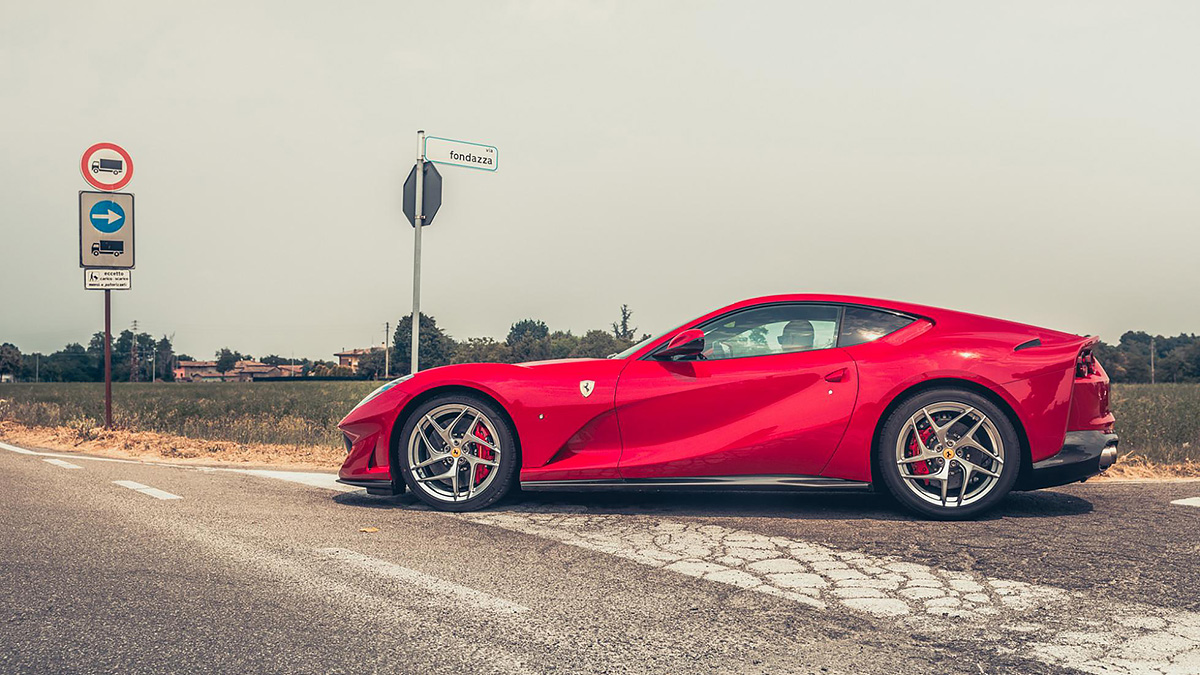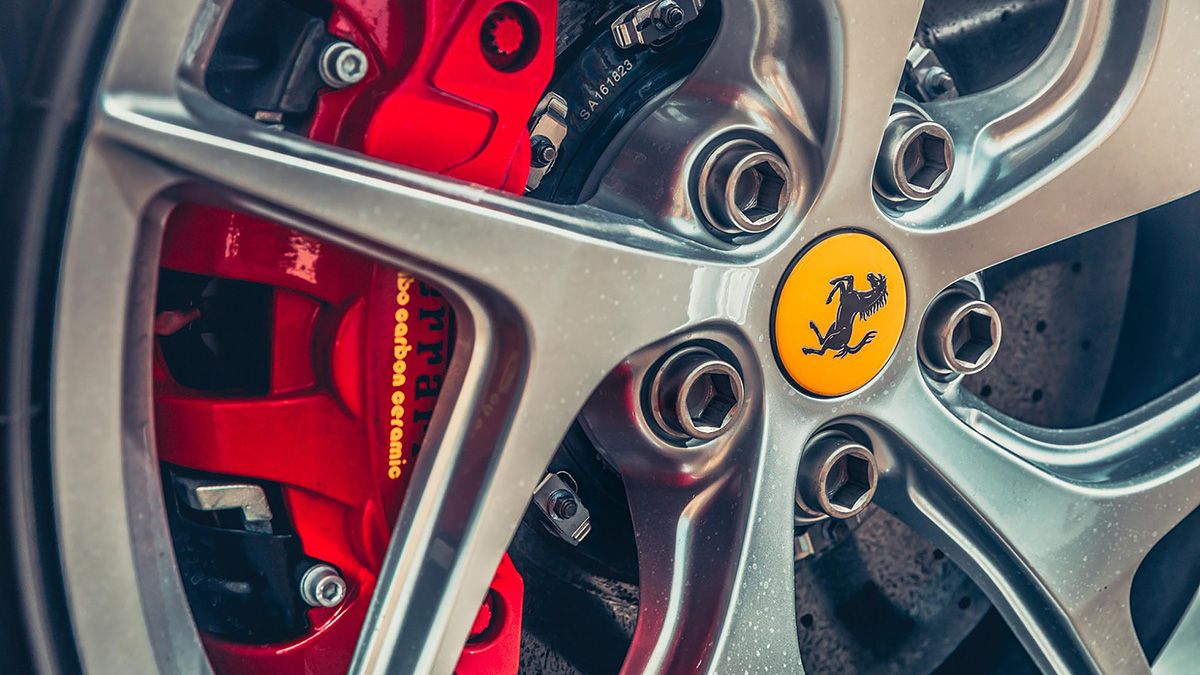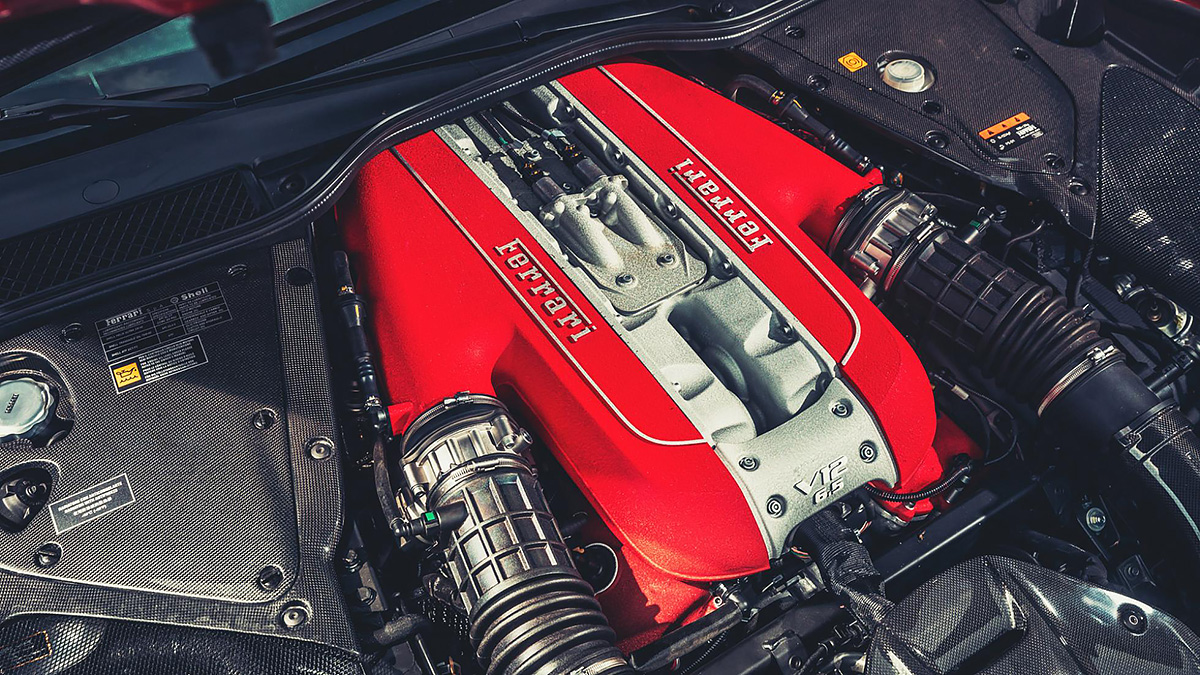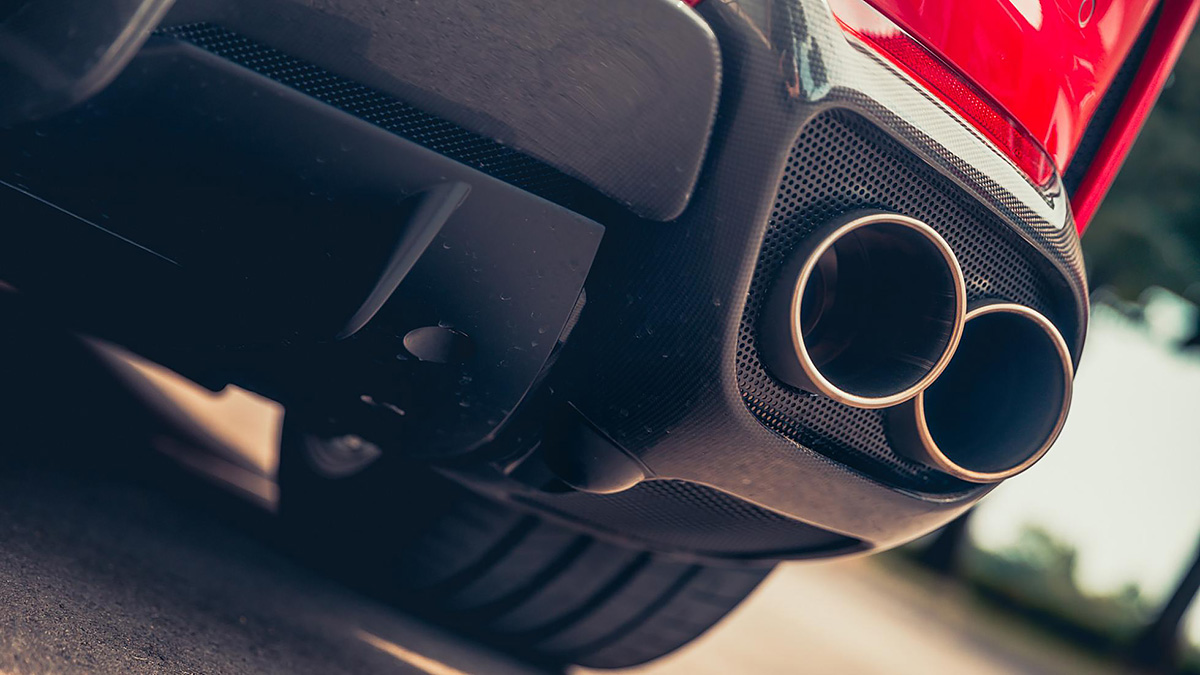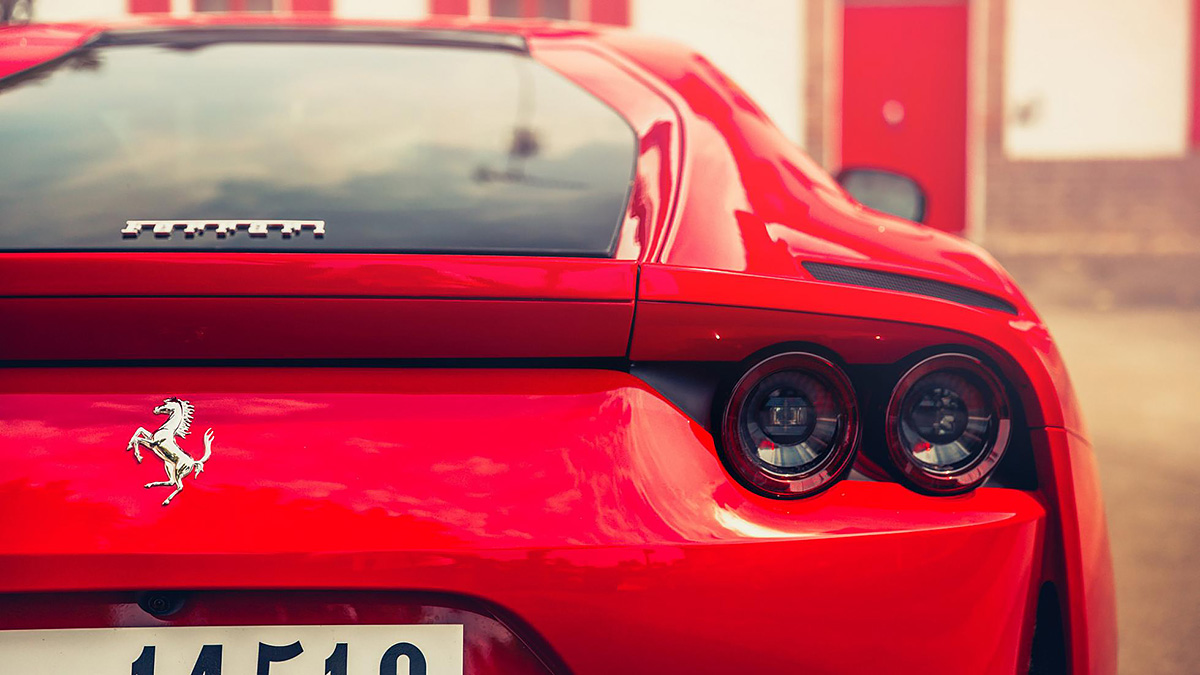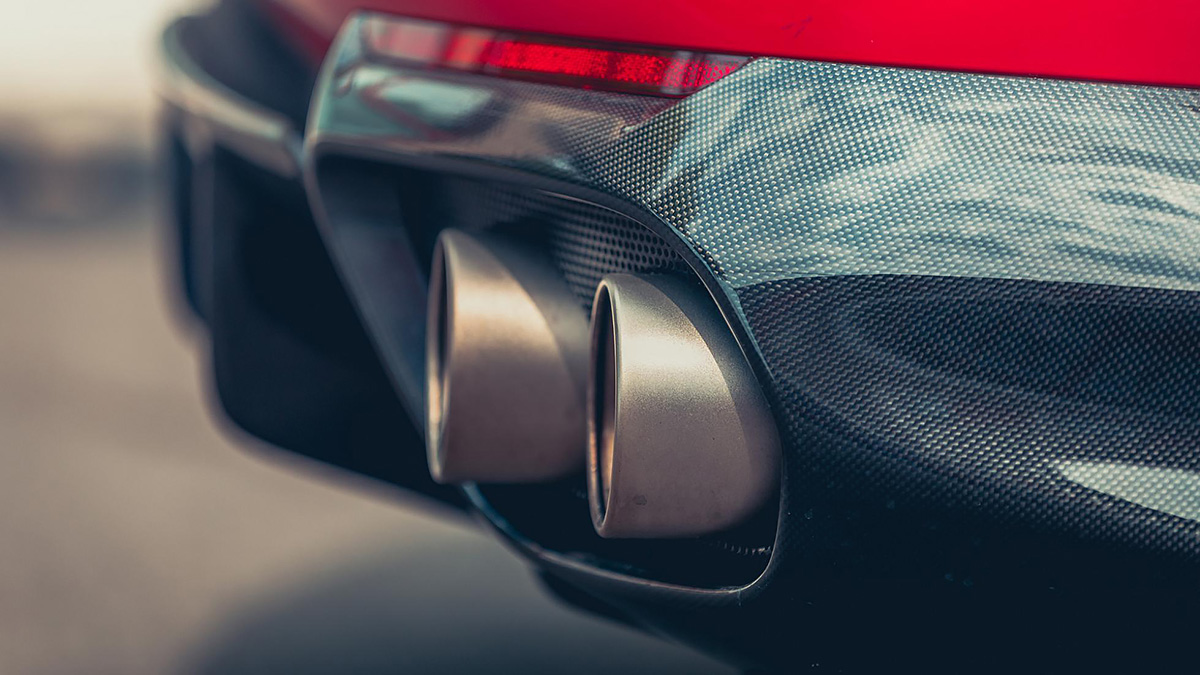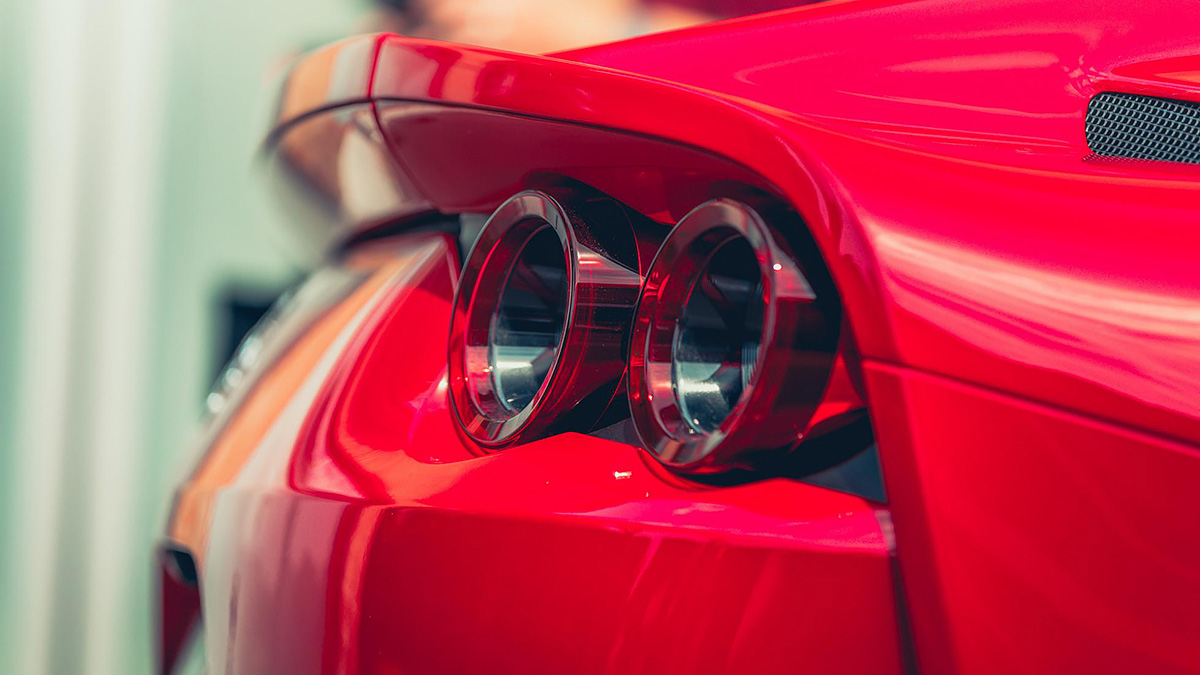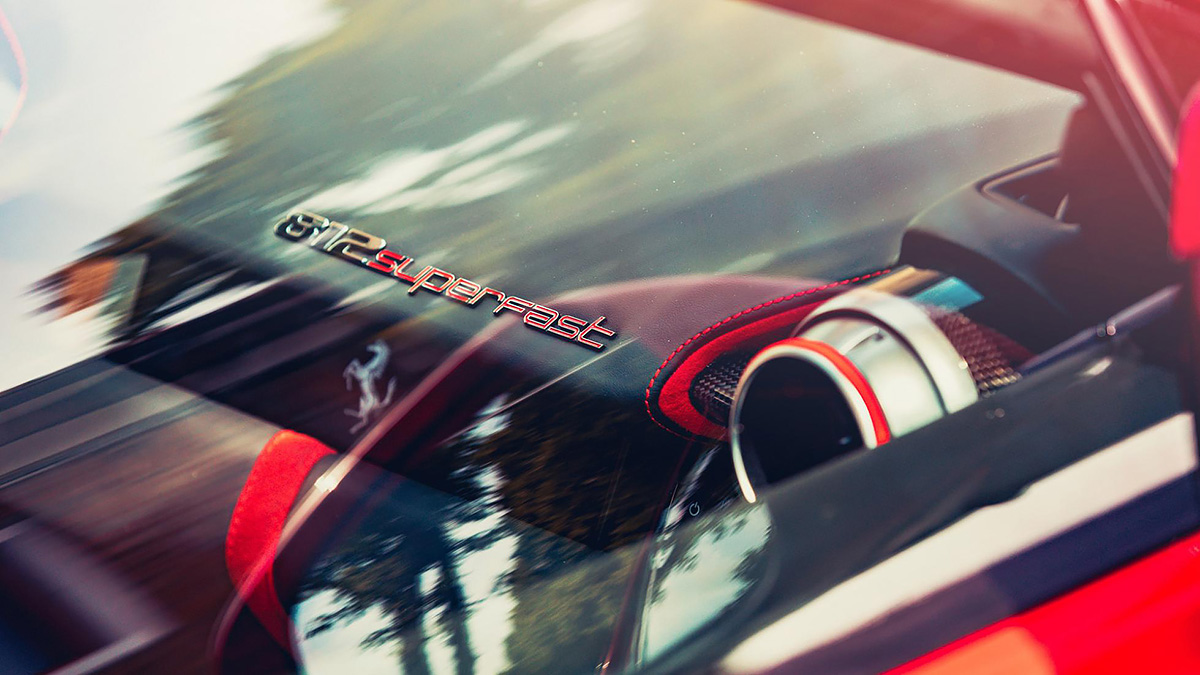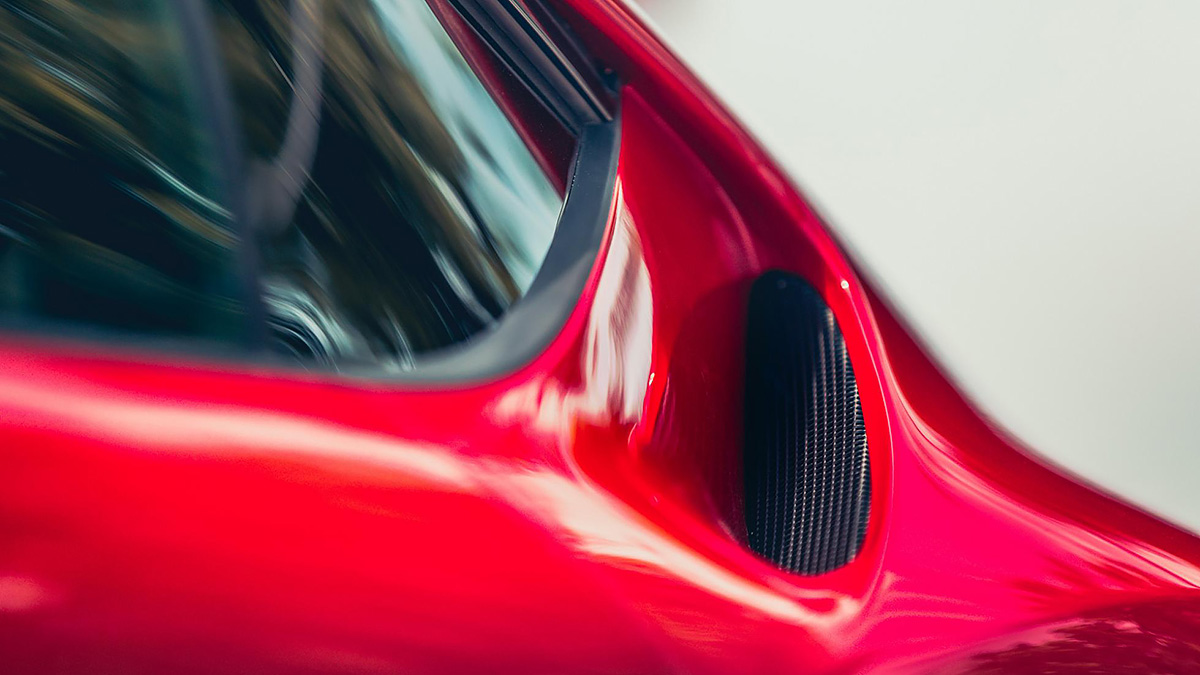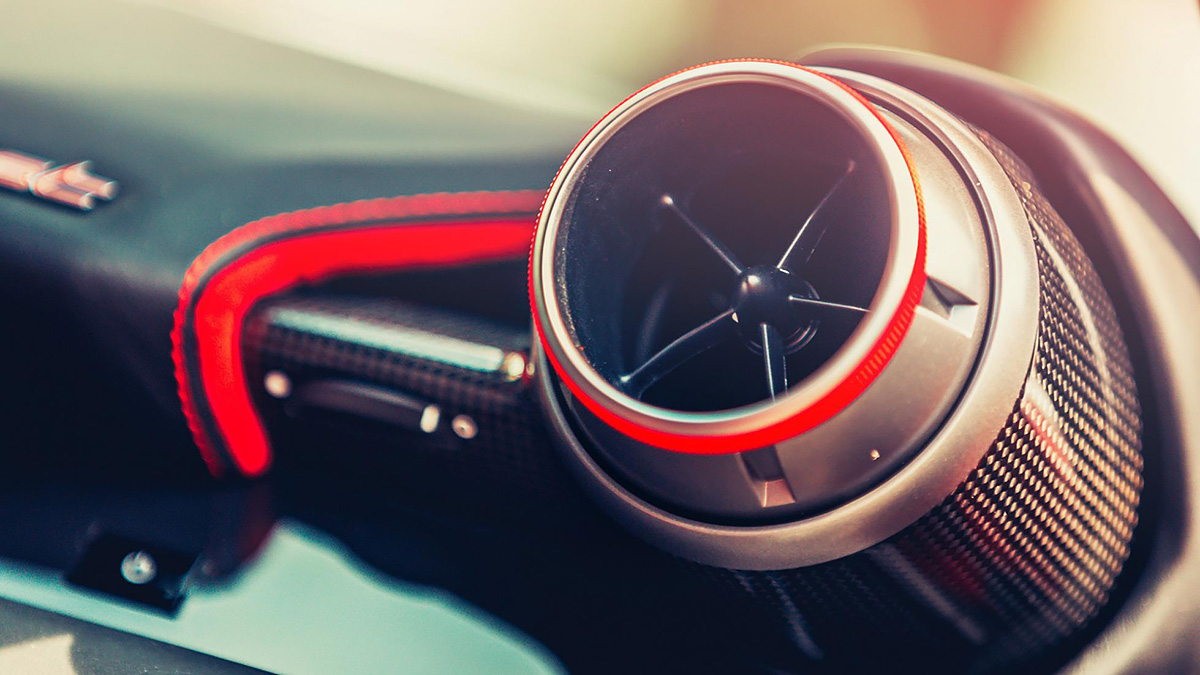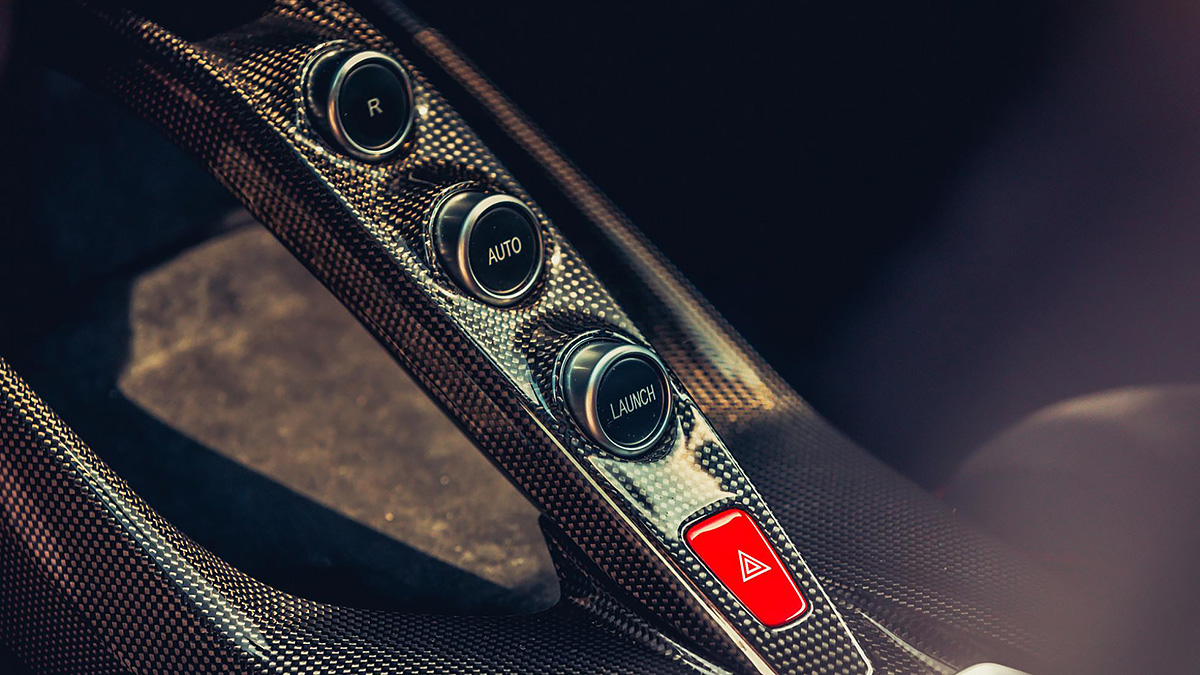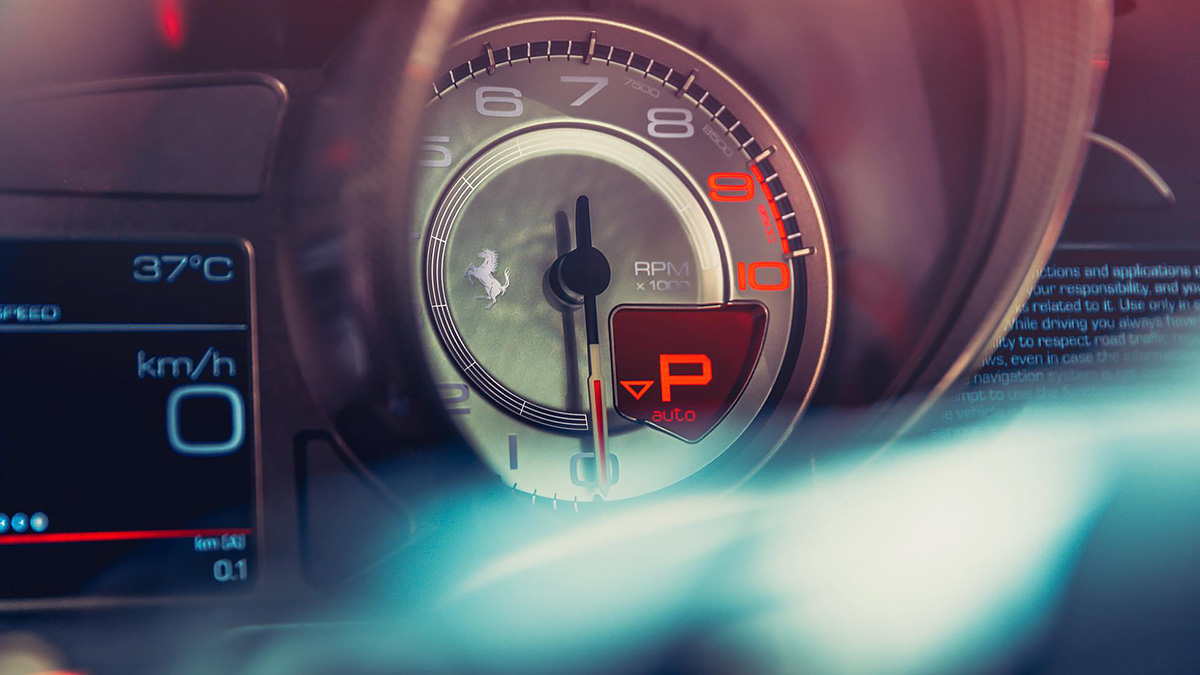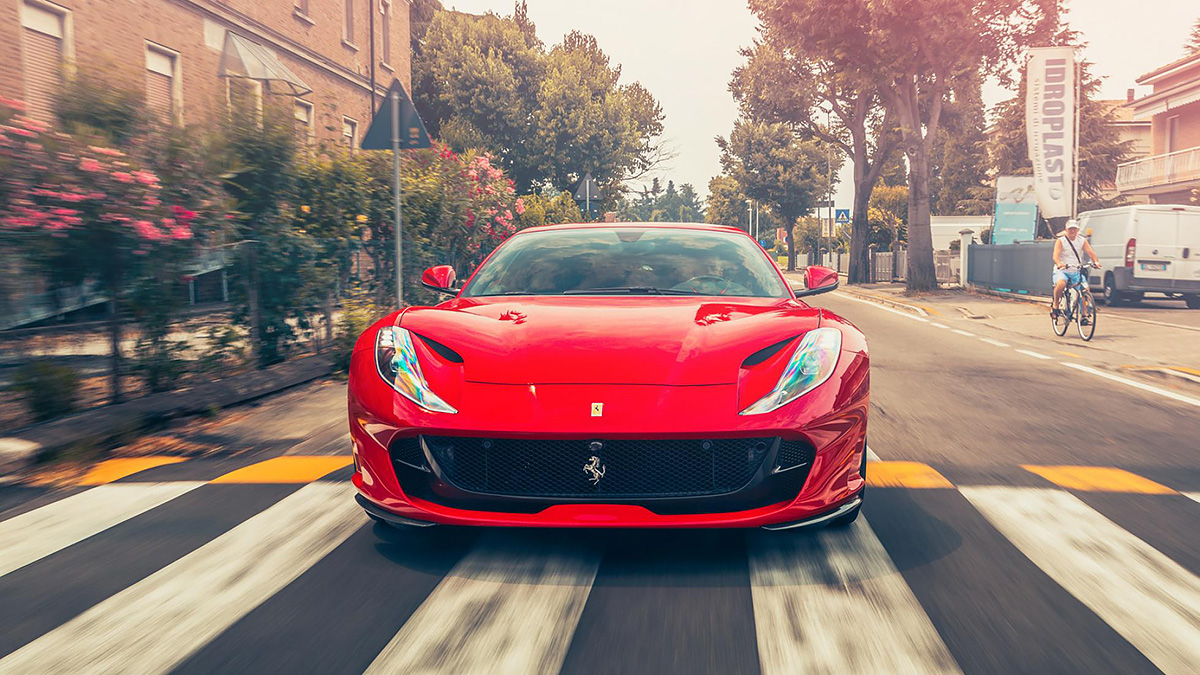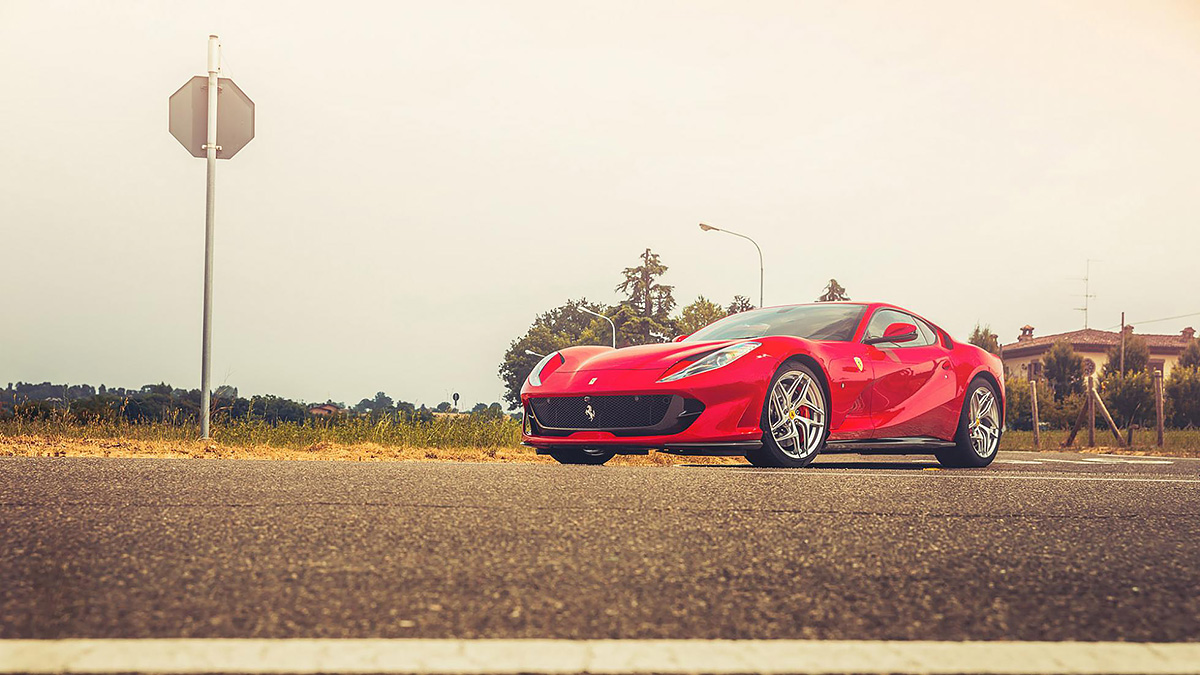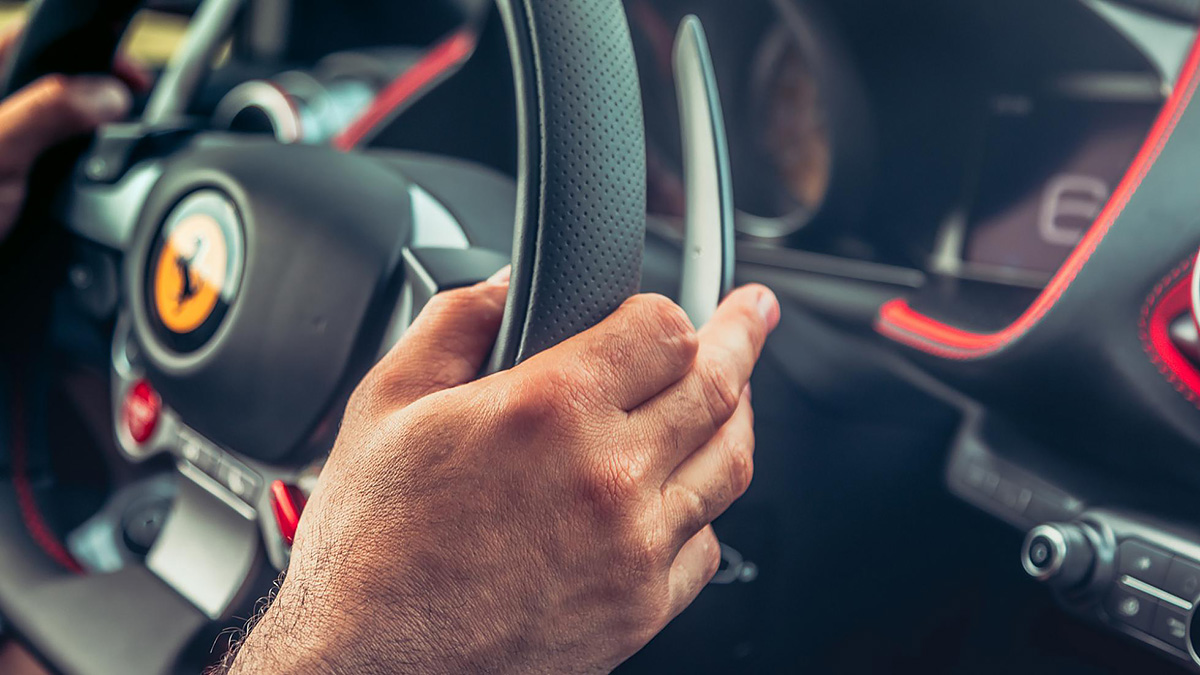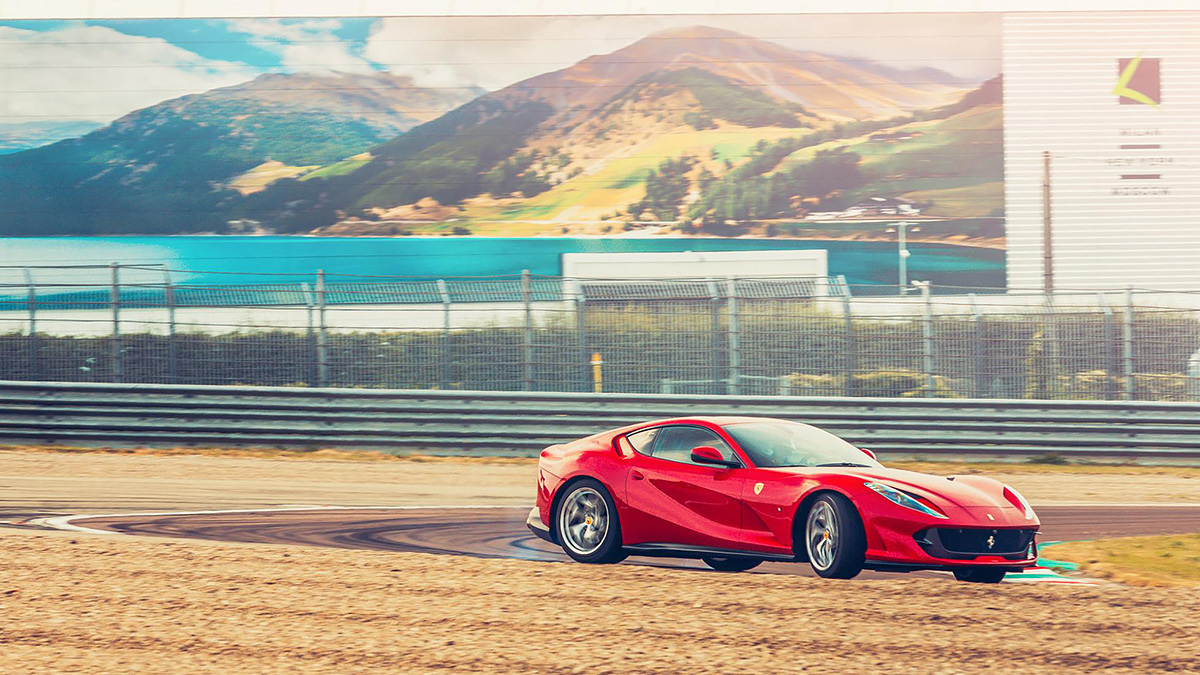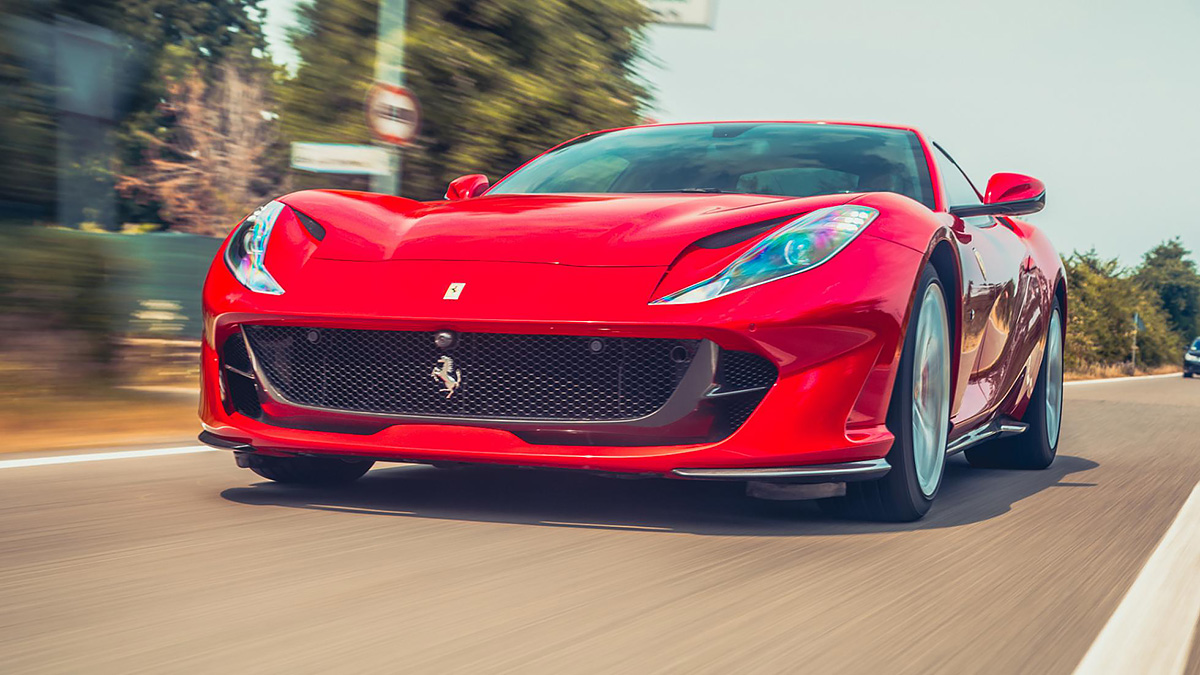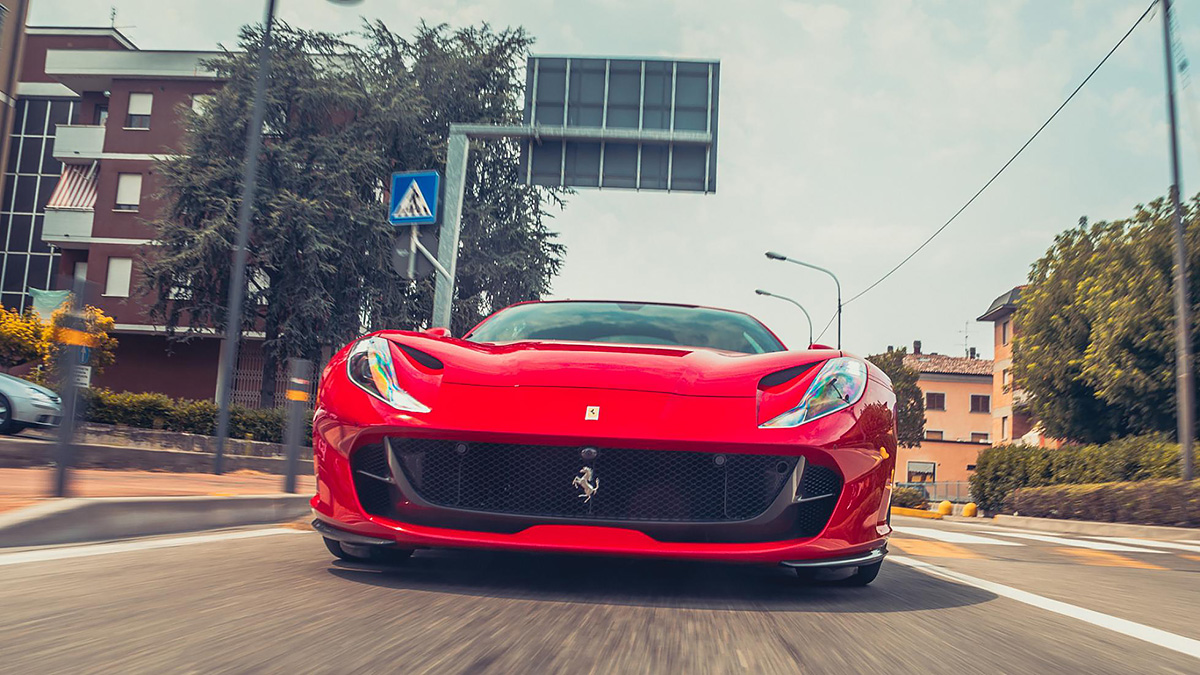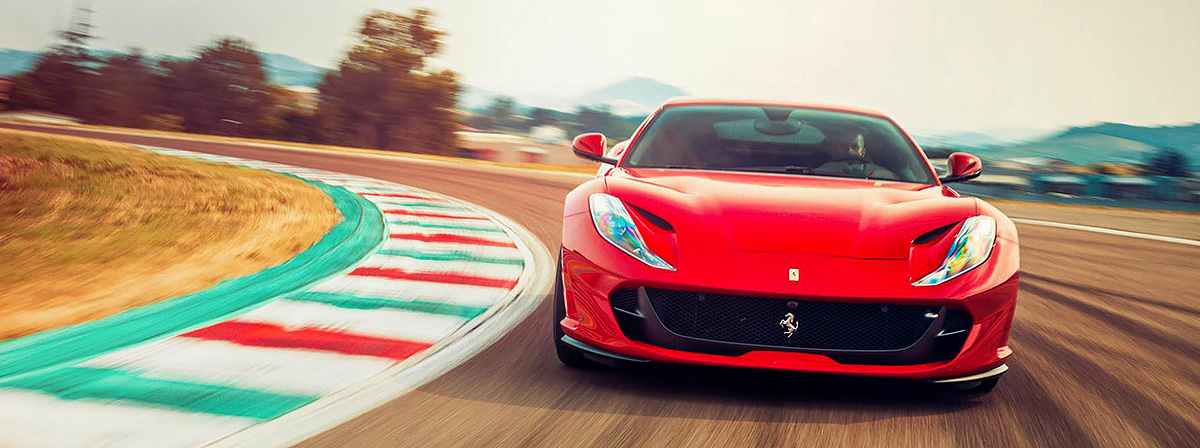
The first time you uncork the 812’s 6.5 litre V12 and allow it to scream to that 8900rpm limiter in third gear you ask yourself one simple question: “Does it feel faster than an F12, I mean can you really feel the extra 60hp?” Is that two questions? Feels like just the one to me.
And this is actually a very difficult question to answer because even though I’ve driven many F12s, when 40 degree asphalt is lightly griddling the P-Zeros just behind your bottom and you have the motive force of eight warm hatchbacks lurking at the end of your right foot, it can be hard to summon your inner-journalist and come over all mature and objective.
So I thumped the right pedal, the 812 spat itself at the horizon with the urgency of a spooked adder, but instead of offering an answer, my mouth opened and I shouted a word rhyming with luck very loudly, and with quite a linger on the vowel.
“Luuuuuuuuuuuuuuck” I shouted. Luck with an F.

And I suppose this makes sense because the 812 exists in the ionosphere of road legal sports cars; its 800hp is so far removed from normality that it actually renders a 60hp power increase relatively meaningless. I mean would you immediately spot an extra 20hp in a Golf R? Probably not.
The 812 Superfast represents the pinnacle of the art of answering a question that no-one ever asked: namely - what would an F12 Berlinetta feel like with more power? I had an F12 last year and during the many thousand miles I enjoyed in it, I never once thought ‘what this totally unhinged missile that will break traction on a damp road in 5th gear needs is some more grunt’. Not once.
But progress is measured empirically and Ferrari is, thankfully, more interested in what is possible rather that what might be necessary. If you leave a bunch of engine nerds with a 740hp 6.3 litre V12 it is inevitable that they will increase the capacity (stroke, not bore) add the variable intake from the TdF, the highest pressure injection system ever fitted to a petrol engined car (350 bar) and change pretty much all of the internal components. I challenge anyone to drive an F12 and reach the conclusion that it needed a completely new engine. But that’s what Ferrari has done for the 812 Superfast.
Shortening the gear ratios is a good idea, as is the adoption of the TdF’s rear wheel steering hardware. Asked if this car is actually a TdF in drag Ferrari engineers confirm that it’s closer to the special edition F12 in terms of performance and philosophy, but that the rear-axle-steering (which Ferrari calls virtual short wheel base) has been recalibrated for a less nervous set of behaviours. I think that’s a quiet admission that the TdF in the wet was a full ‘CODE BROWN’. The steering system itself is now electrically powered.
The styling changes are largely a function of the complicated aerodynamic revisions over the F12. This marks a quietly impressive shift in strategy for Ferrari: instead of making seemingly random downforce claims and supplying a CFD diagram that bore a striking resemblance to a child’s colouring-in exercise, it has given a detailed explanation of how the 812 manages airflow. A pair of front intakes manage underbody flow - they’re actuated through air-pressure. This means the car can stall a good deal of its lift-reduction flow to reduce drag (340kph isn’t too bad) but can use a much more prominent rear spoiler and larger diffuser when needed for medium and high-speed cornering.
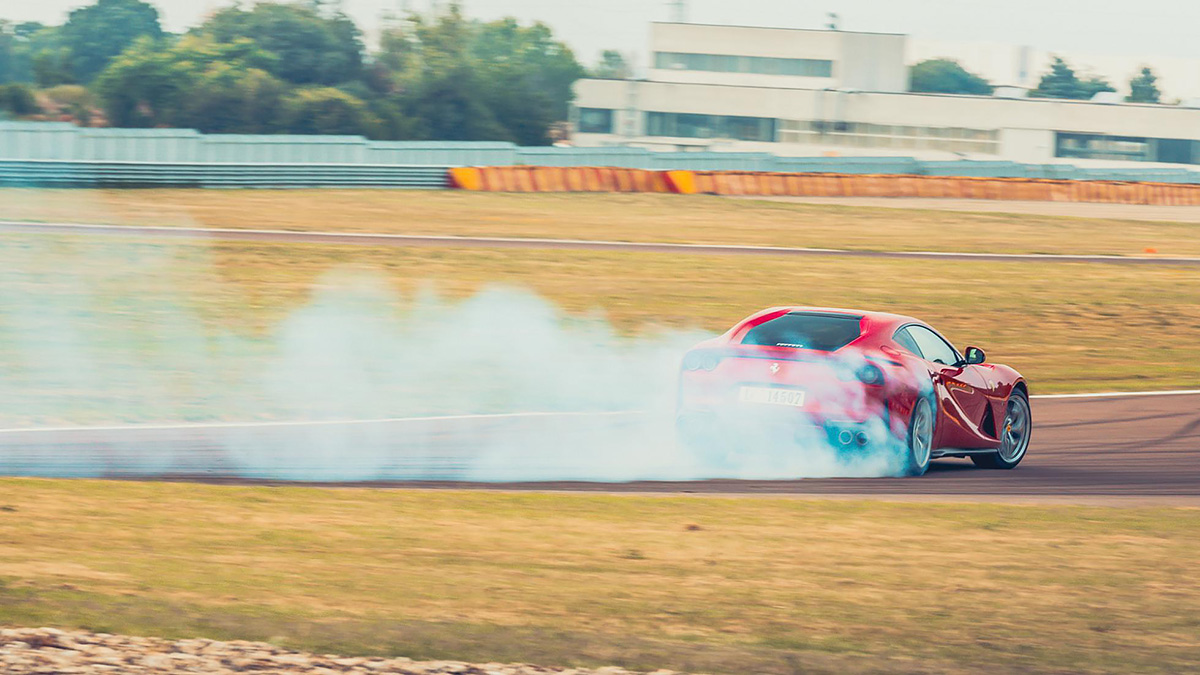
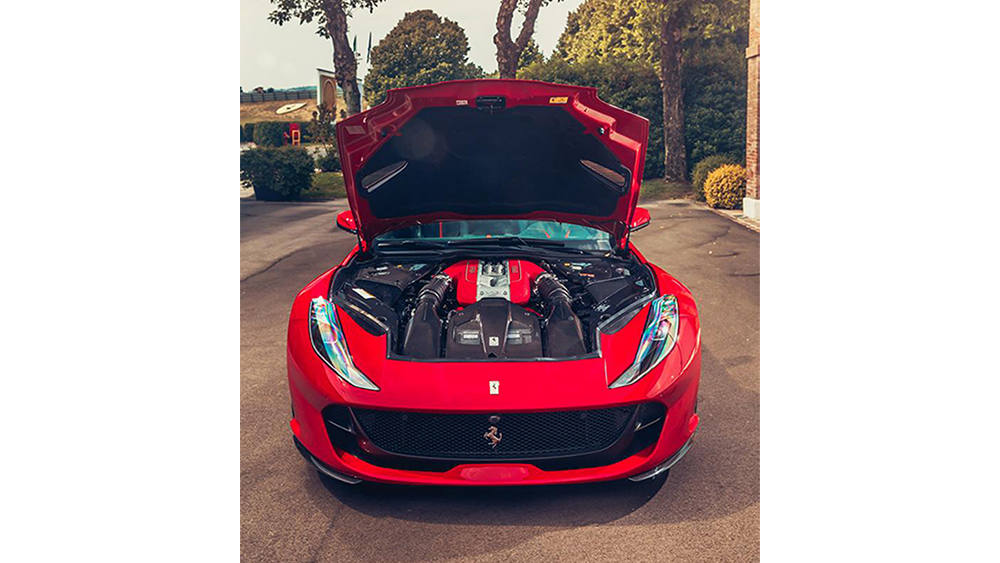
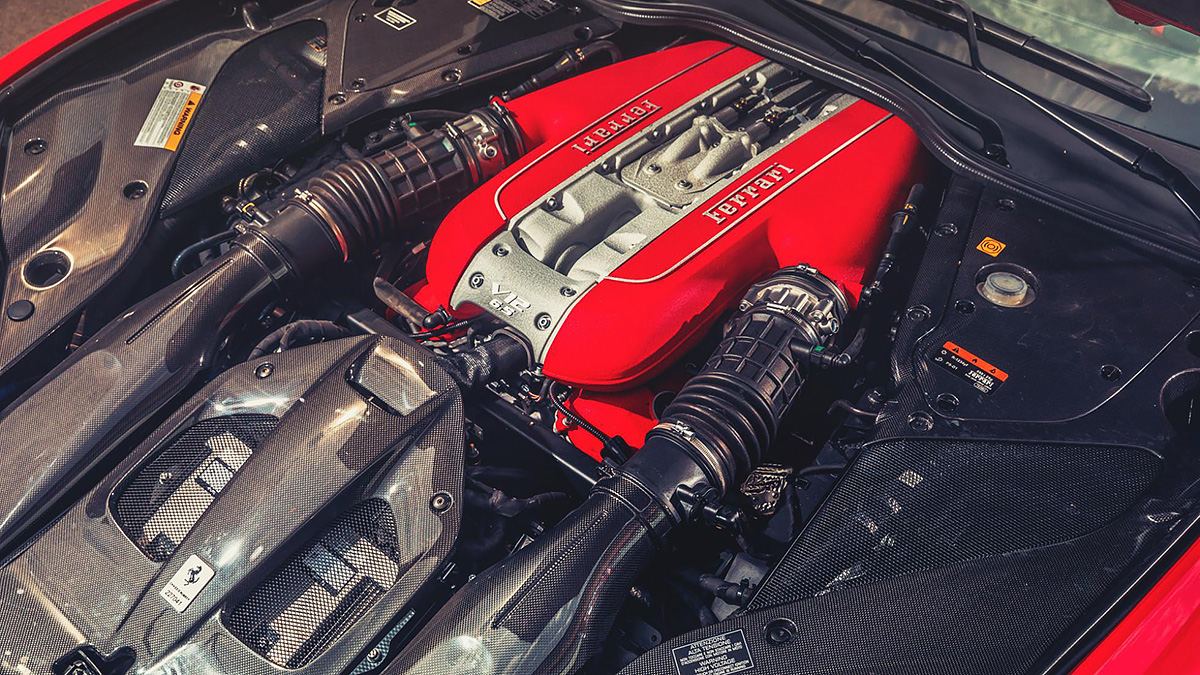
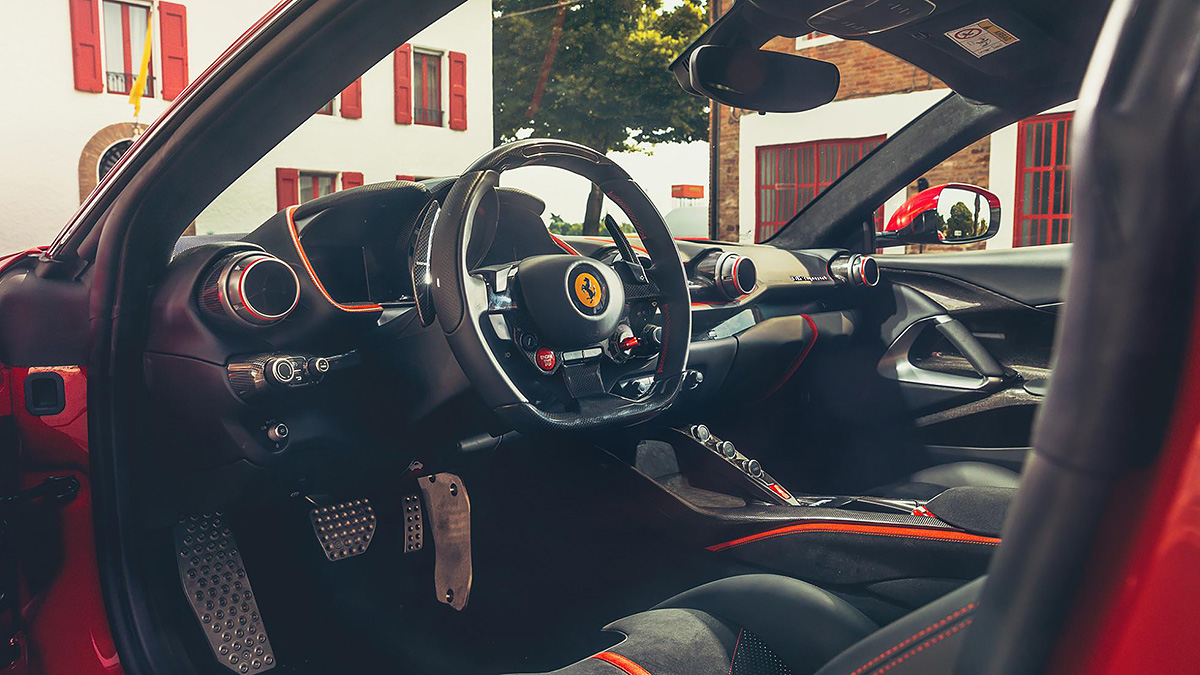
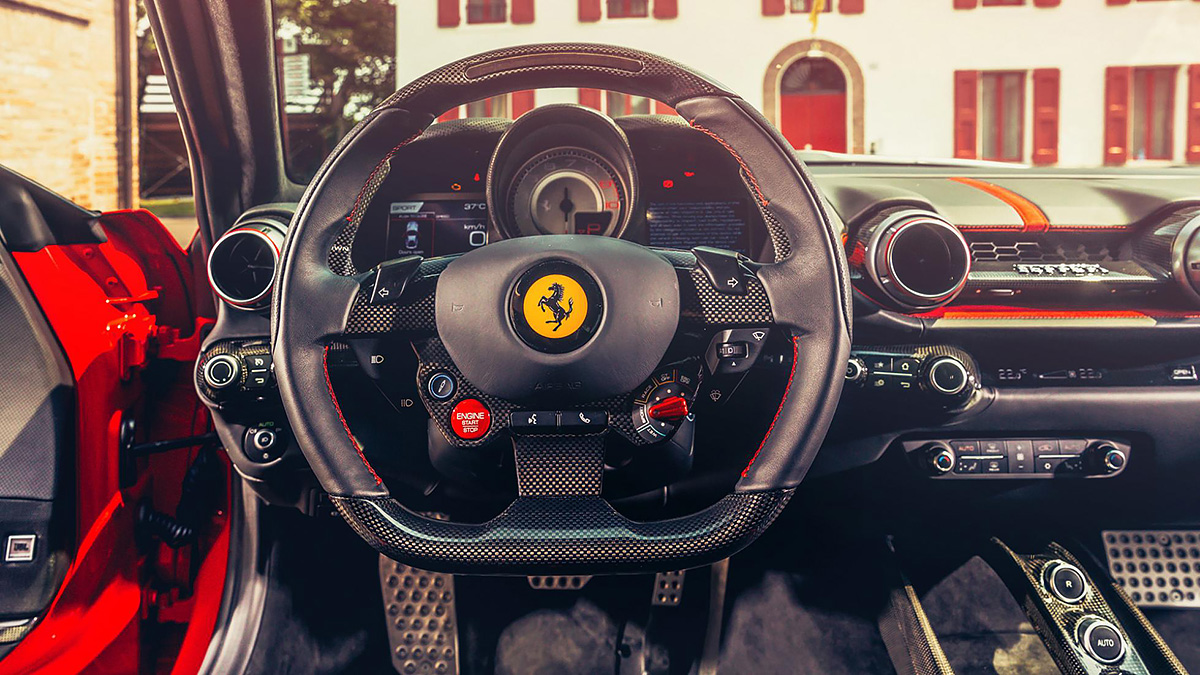
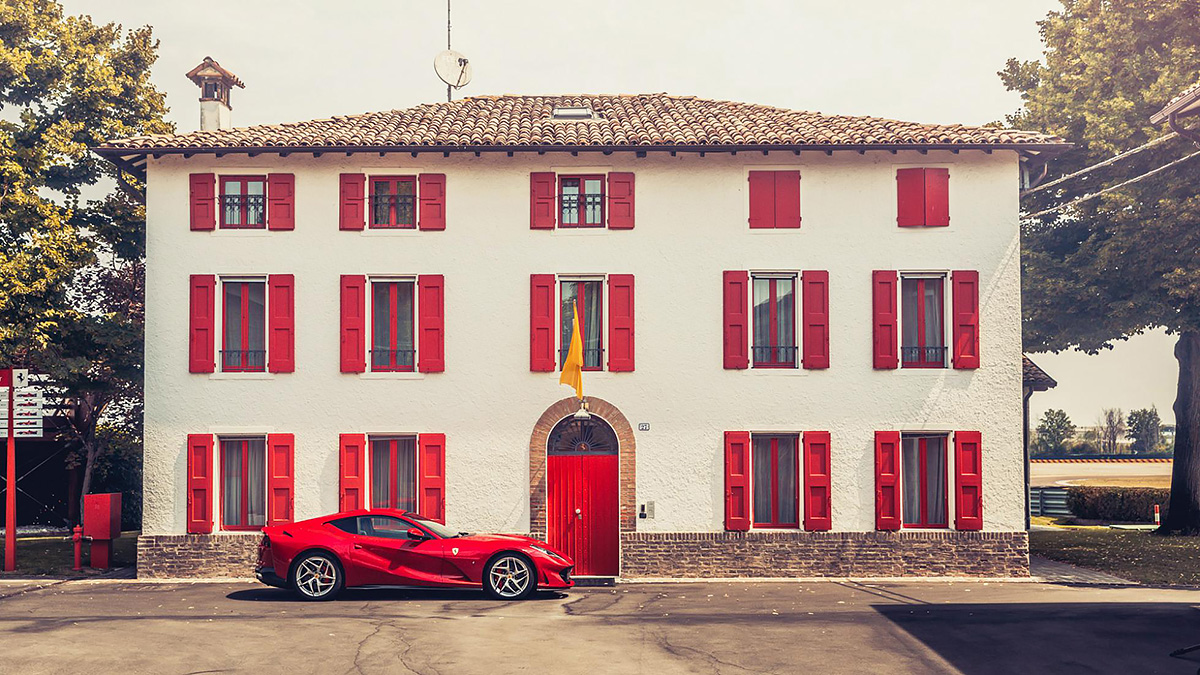
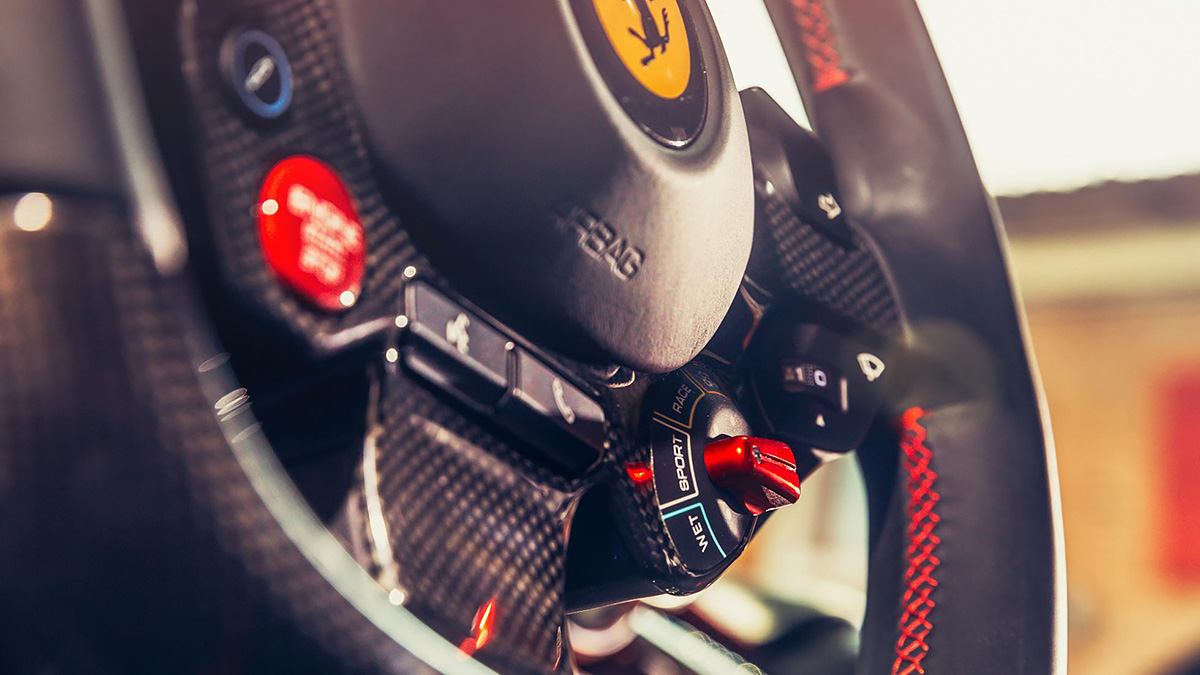
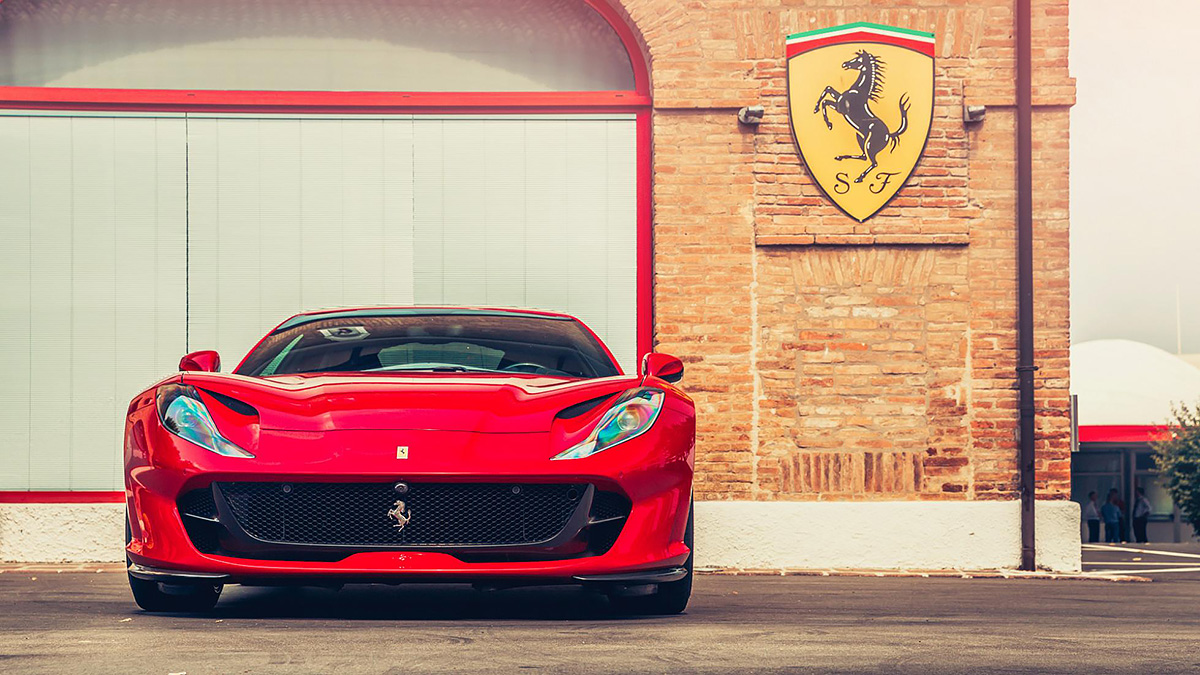
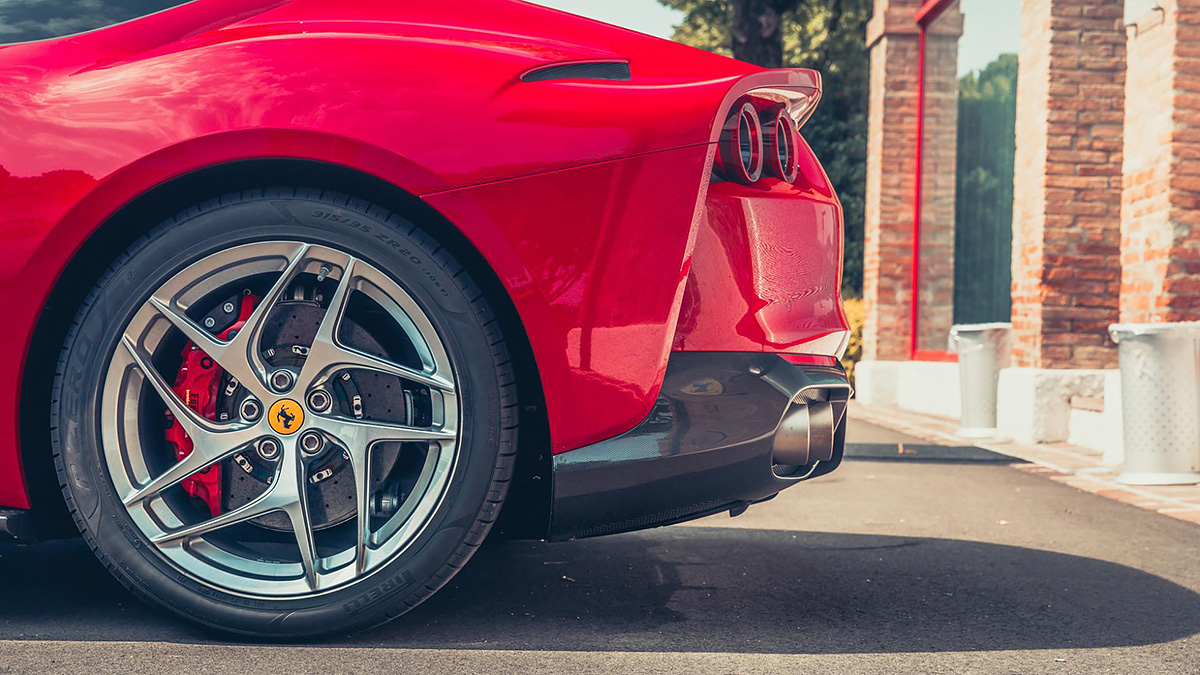
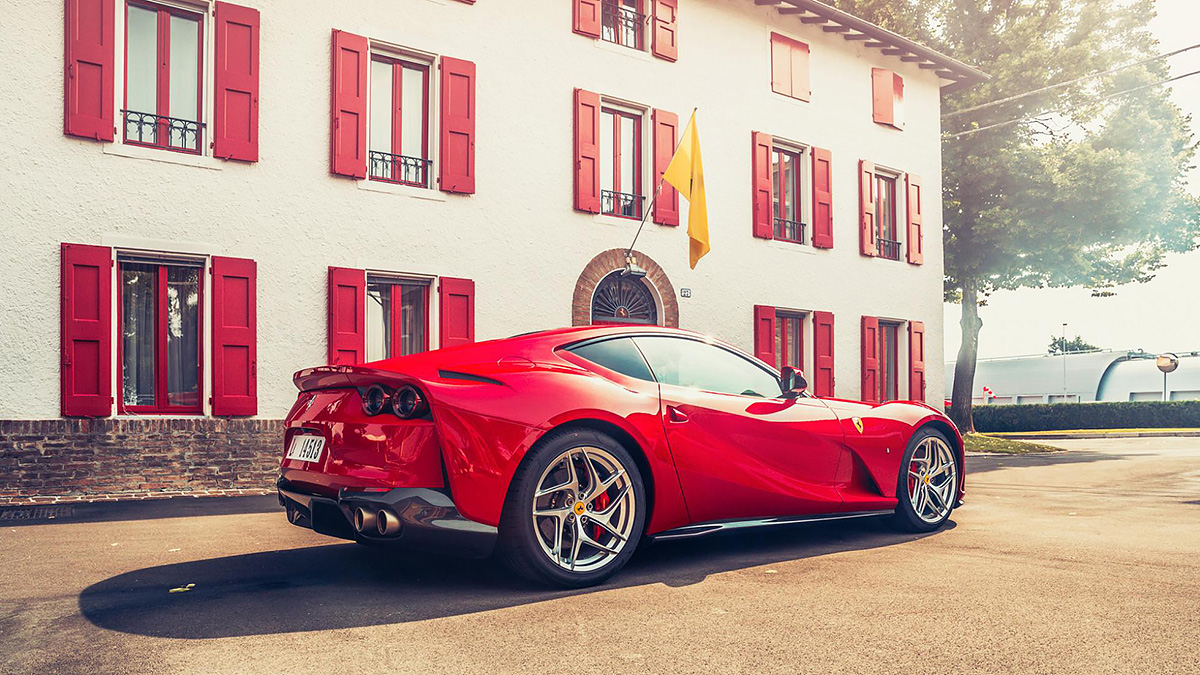
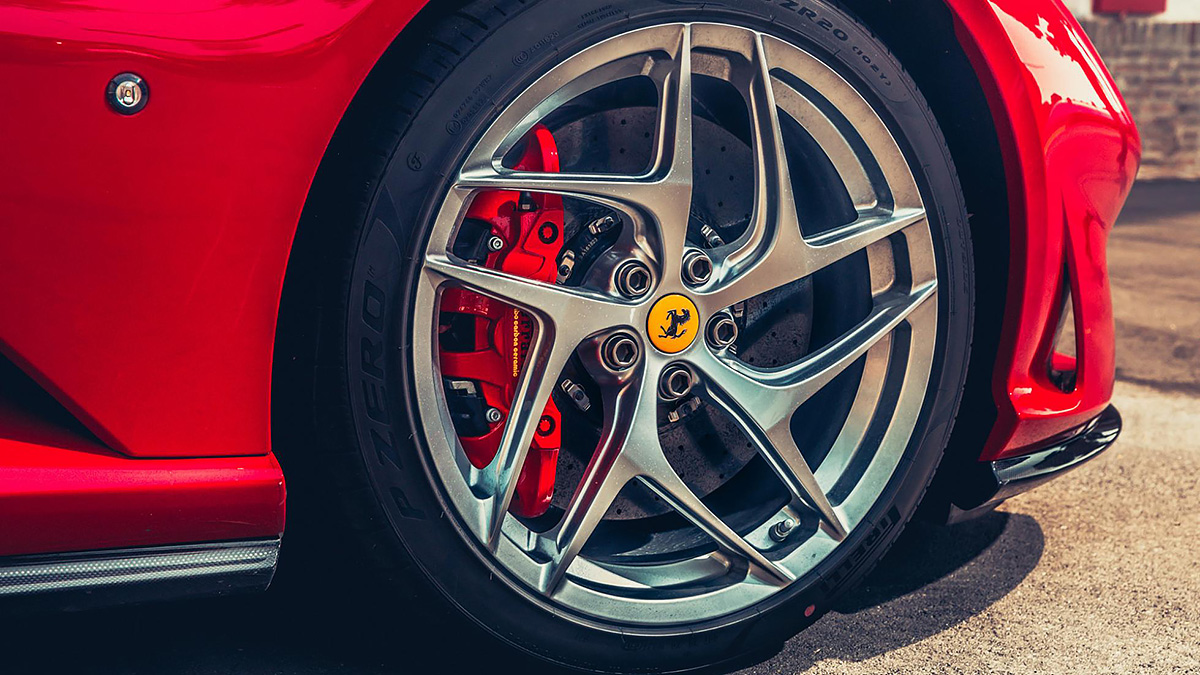
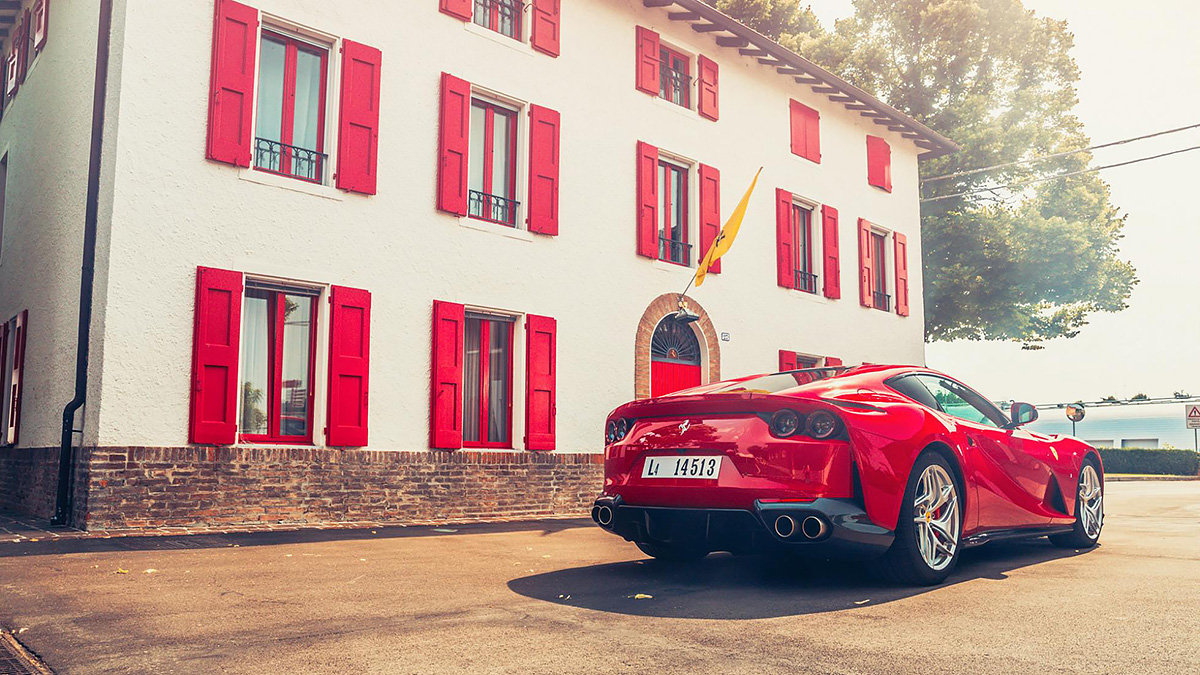
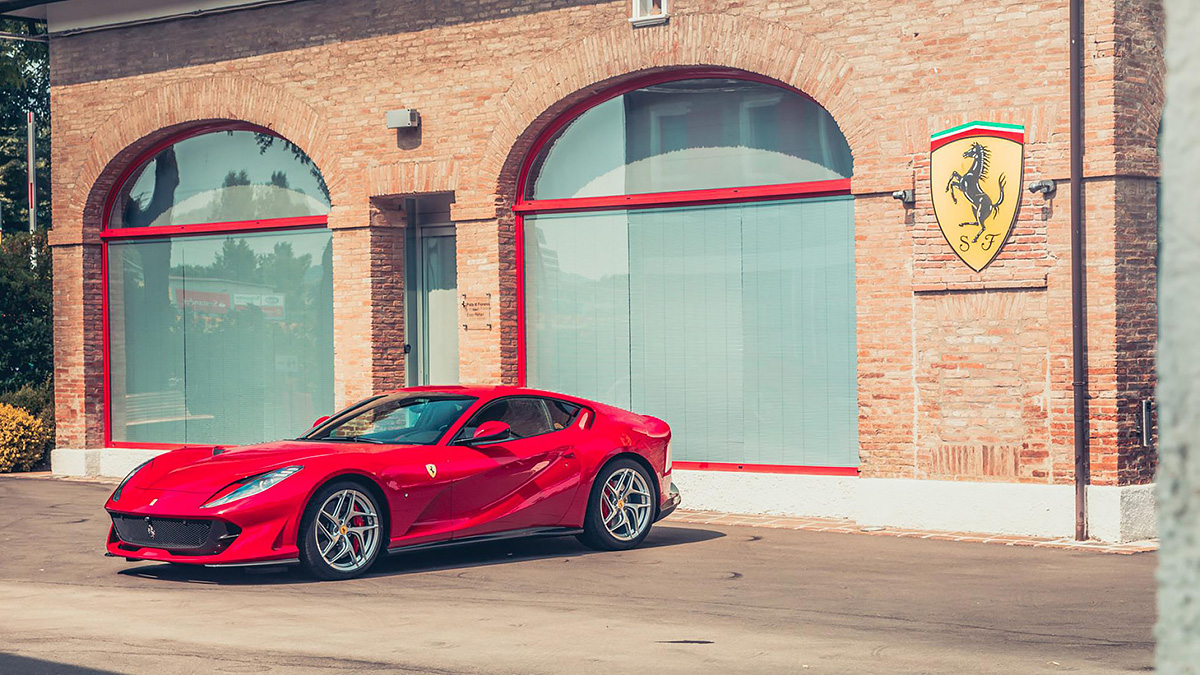

So, yes, the 812 Superfast is a facelifed F12. But this is much, much more and a nip ’n tuck. And the name isn’t as silly as you might think - there were a few Superfast models built for the US market in the 60s, although one assumes that the moniker SF will become commonplace.
The short gearing allows that more potent V12 to spool even faster, and the result is a car that leans on its chassis electronics more than any other. Remember it’s a street car and so the standard P Zero needs to work in deep standing water and freezing temperatures. In race mode with all the systems on you can open the taps before the apex and just let the electronics manage all the dangerous stuff, but the tyre becomes hot so quickly that at times the interventions seem unnecessarily harsh. The brakes are strong and the pedal feel pretty good, but Porsche still makes a set of ceramic discs deliver more bite and confidence for the driver.
It’s a great example of mechanical complication delivering a starkly simple driving experience.
There is much witchcraft occurring within this chassis. The electronically variable differential is linked to the traction and stability control and now the rear steering too. The car can also adjust the steering force through the wheel depending on the conditions. This is supposed to give the driver better information about grip levels, but to be honest with you, I wasn’t that aware of its intervention. The change from hydraulic to electric assistance doesn’t alter much about the Ferrari’s big V12 Berlinetta because the old rack was pretty inert and so is this one.
It’s a car you steer through your wrists and one I still feel has too fast a rack for this type of machine. But it’s consistent and the 4WS system has one neat trick up its sleeve: if you get some bad understeer (it’ll happen under hard braking, because under power this thing doesn’t really know how to understeer) it can tweak the rear toe-angle a little to help the car rotate. It’s a neat trick and works really well. Do you feel the rear steering working on the track? Apart from that function, not really.
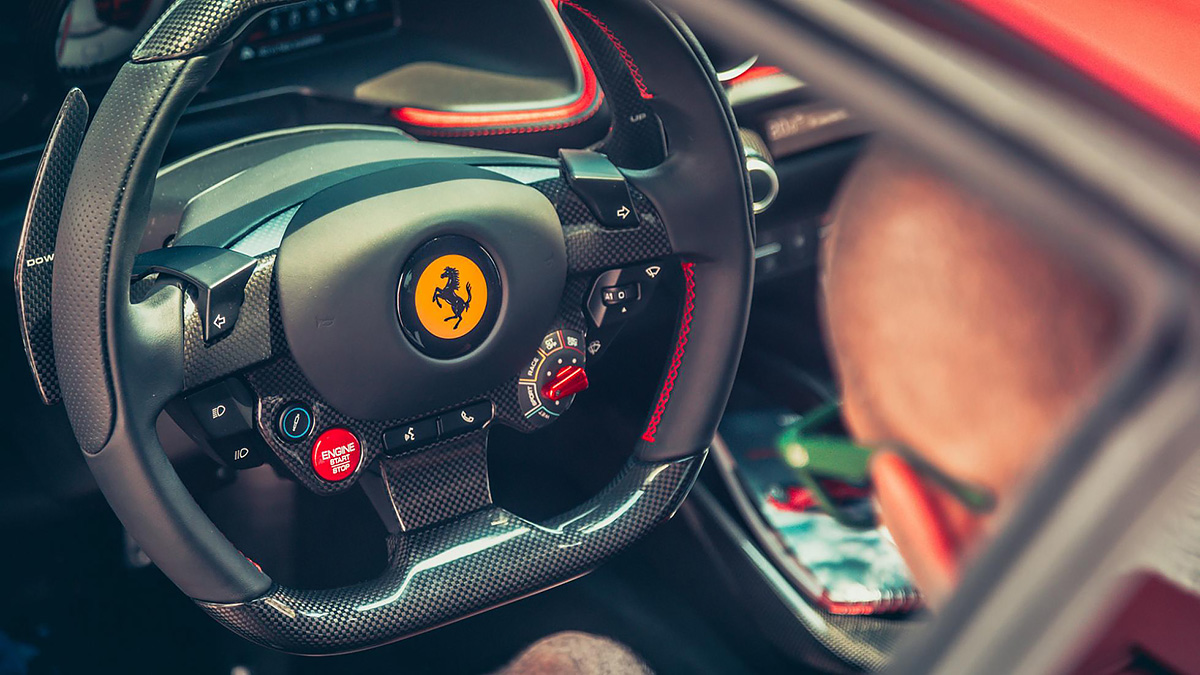
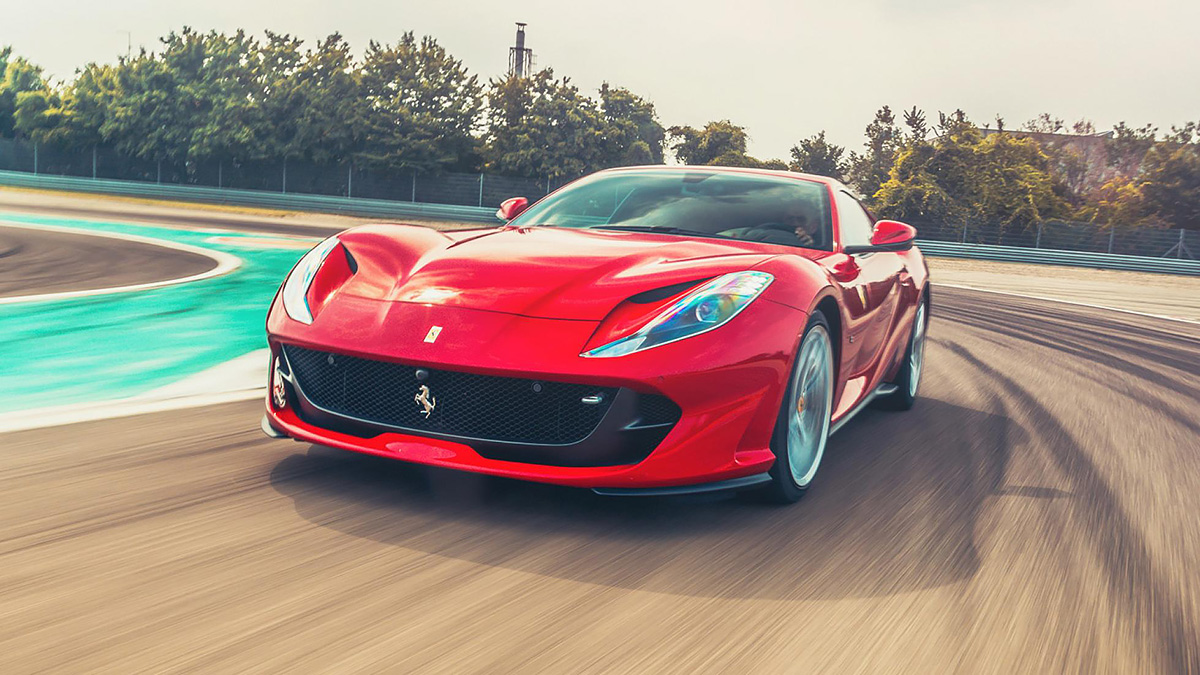
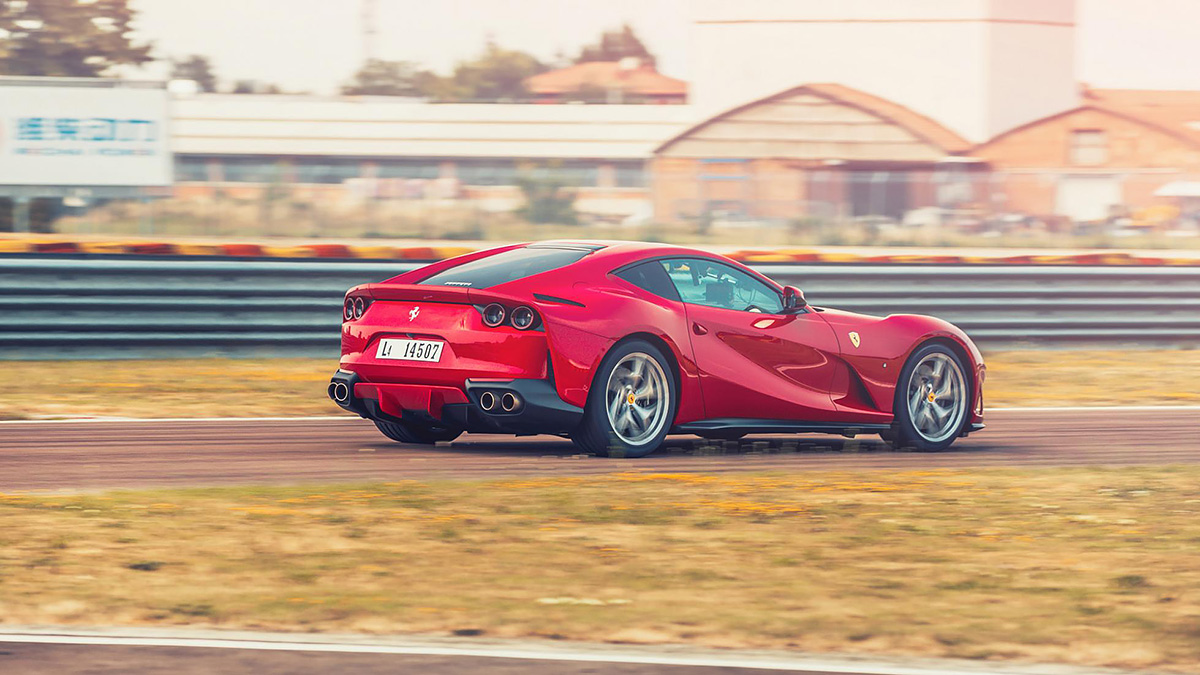
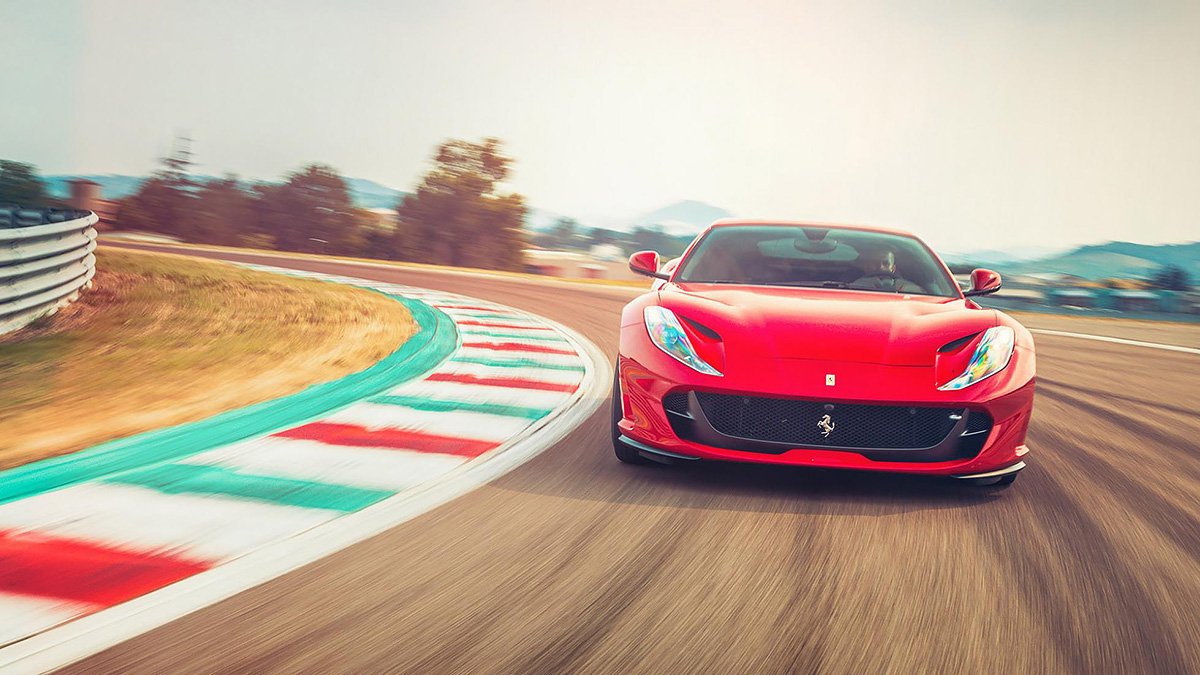
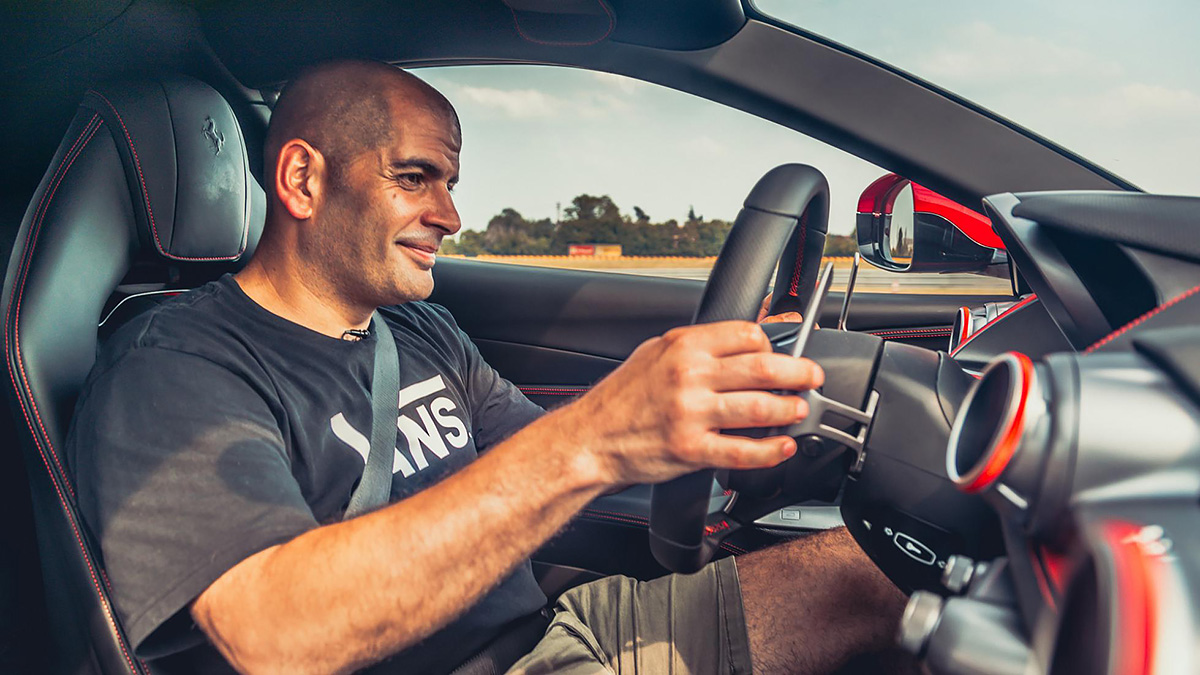
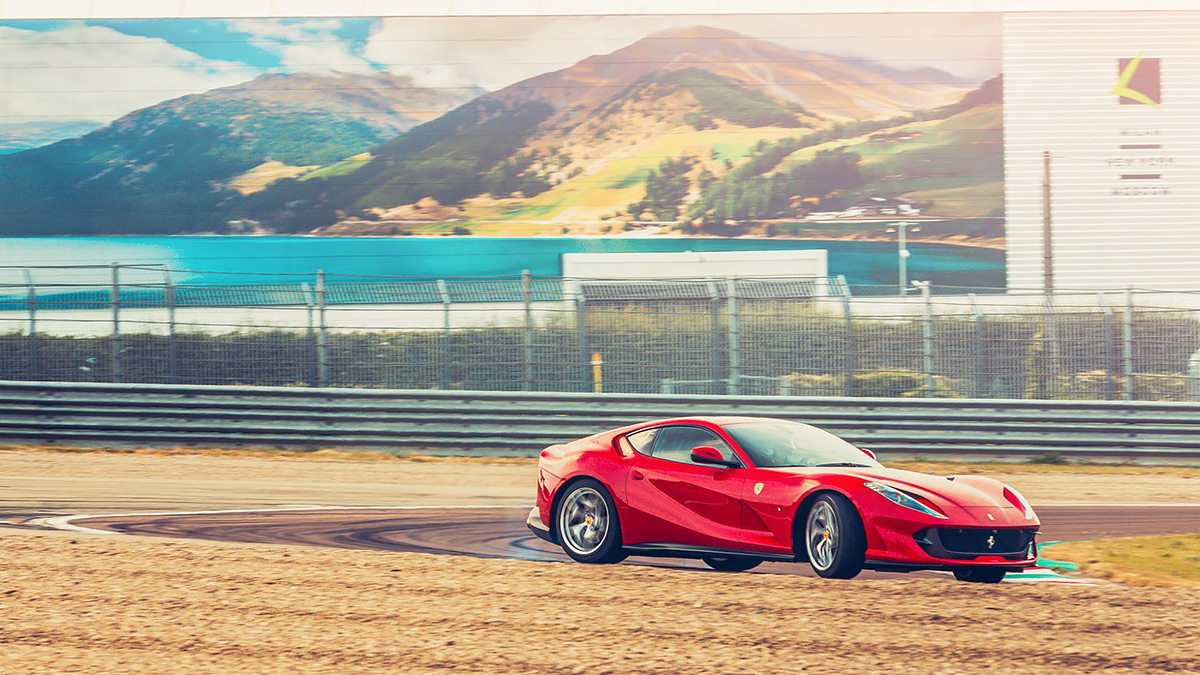
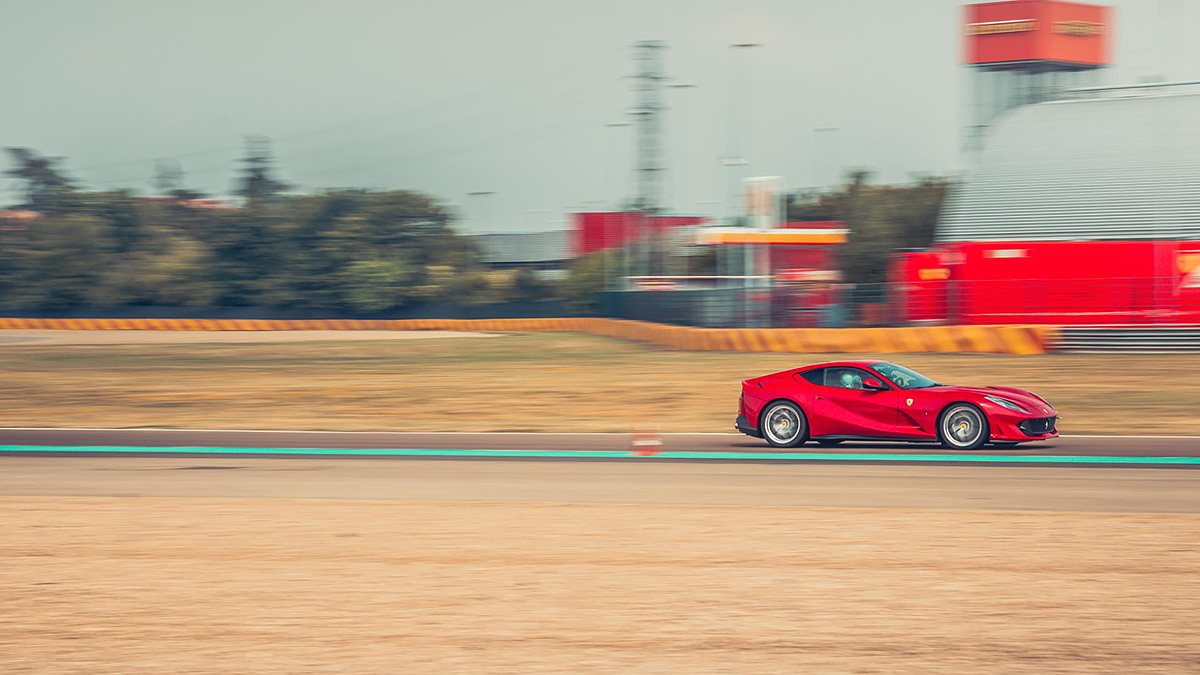
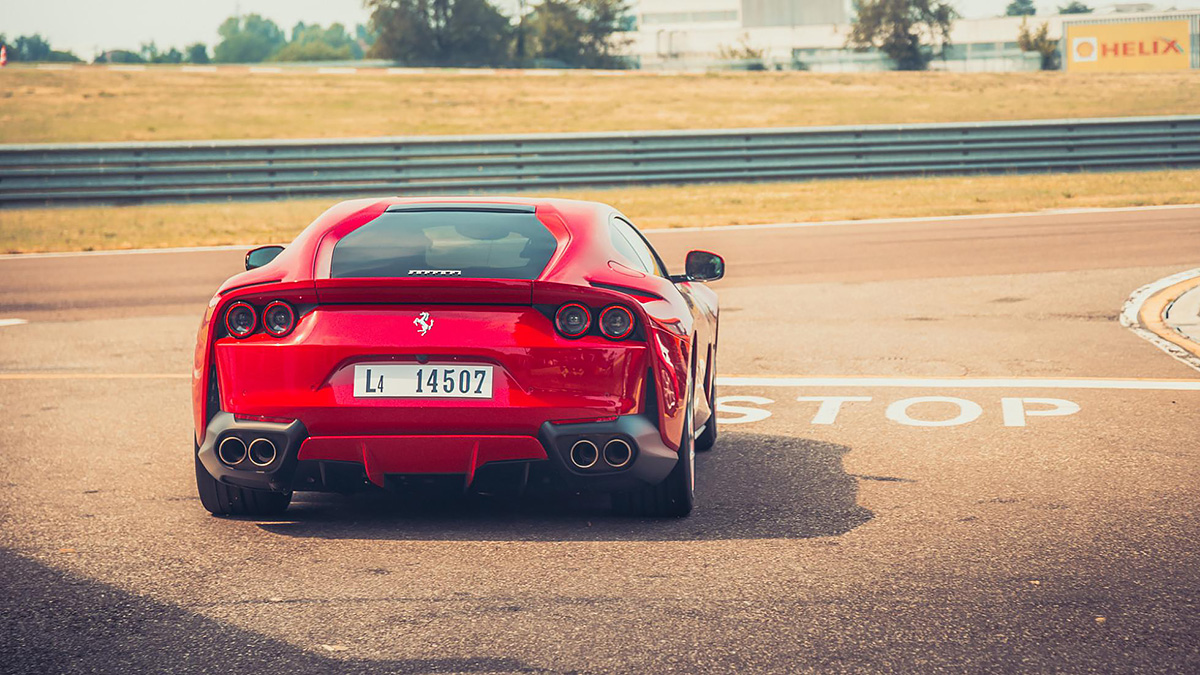
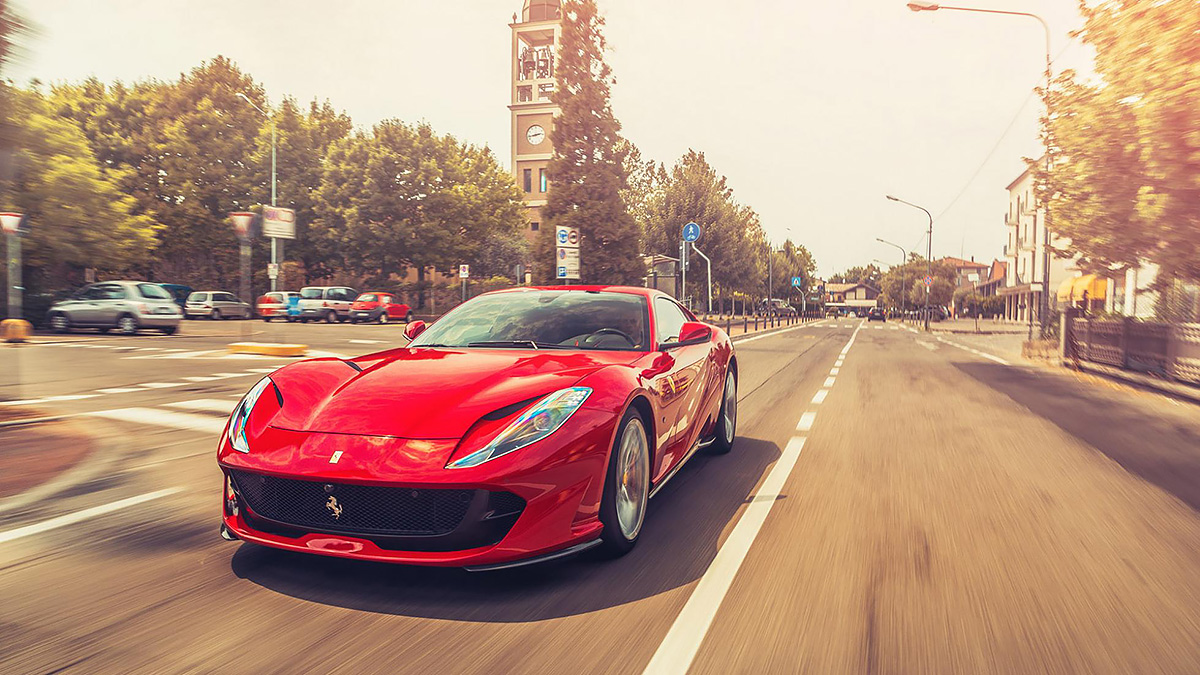
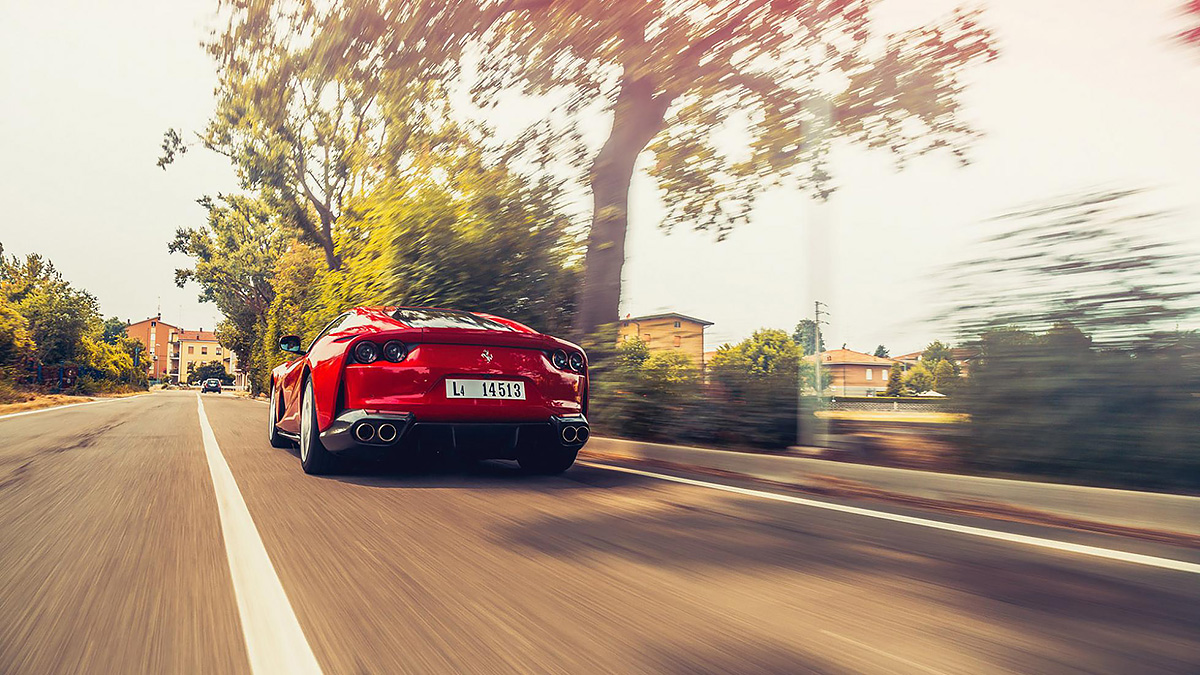
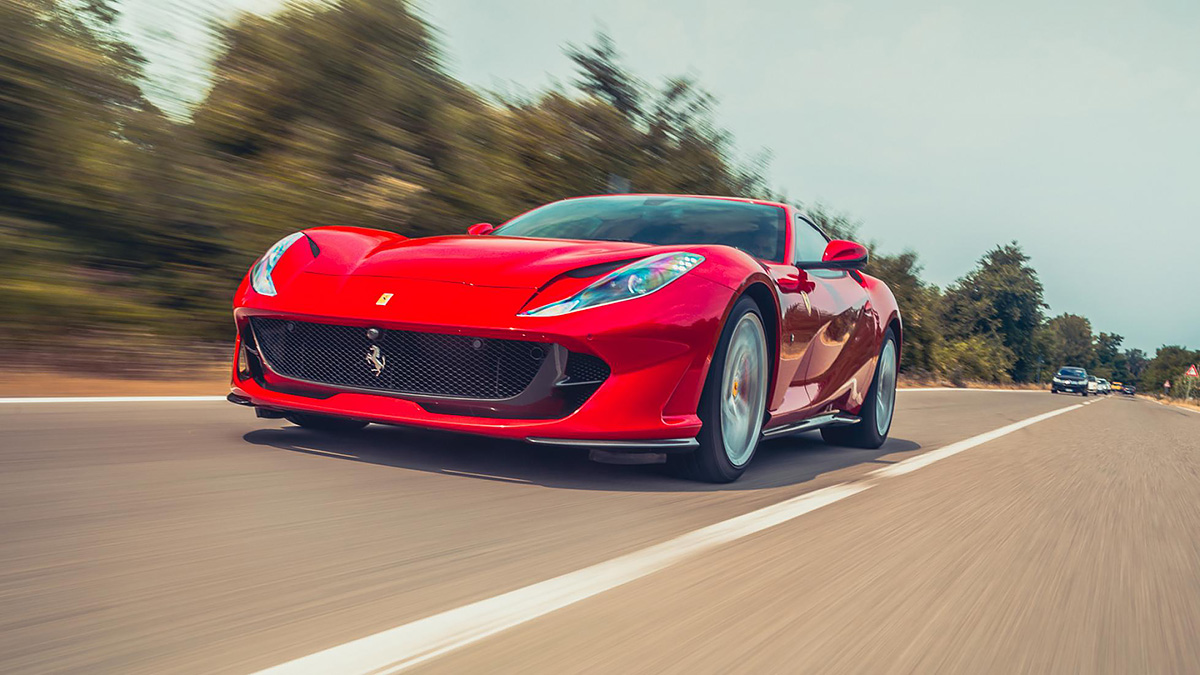
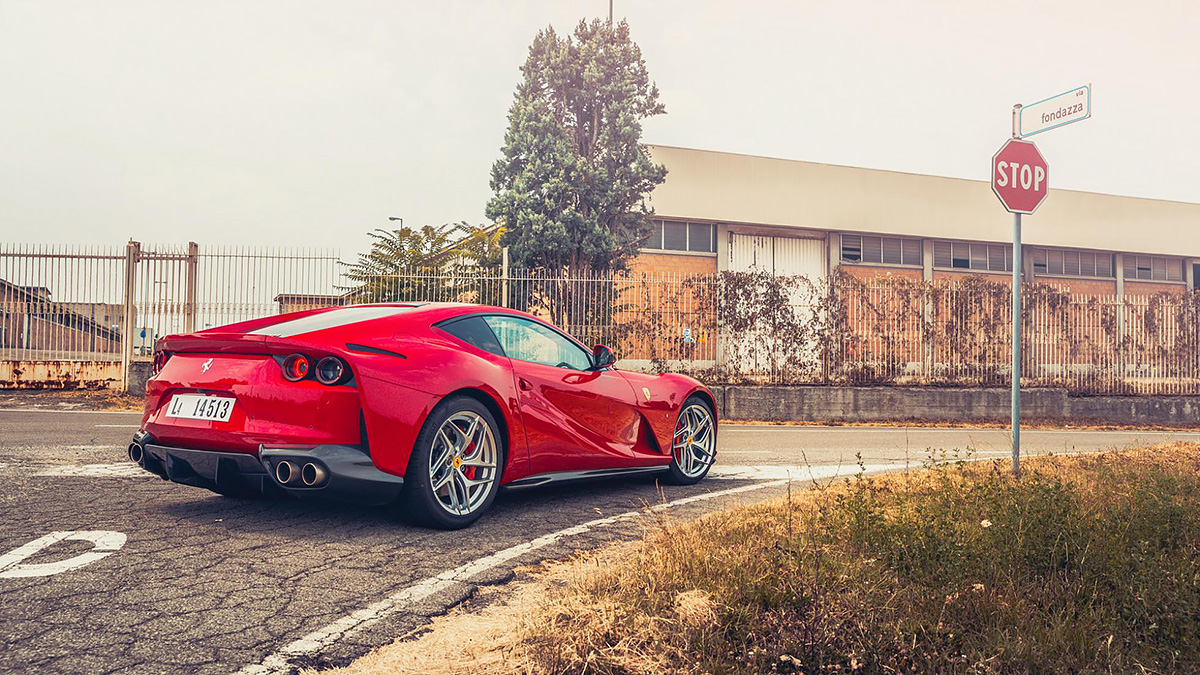
I suppose the biggest compliment you can pay the team who develop these big bruisers is that you don’t approach disabling all the chassis systems with anything like the fear you should something that’s just rear wheel drive, has nearly twice the power of an M3 and yet weighs less. This is partly because they have such freakish traction and partly because when they do let go it’s a smooth transition from grip to slip. The 812 is infinitely more fun driven without the nanny-state intervening, and this in some way defines its core character. The mid-engined Ferraris can be driven absurdly hard before their systems intervene, in fact I’d go so far as to say that in a 488 you only switch them off to be a wally. In the 812 you unlock so much more.
For starters the rear of the car doesn’t just slew into some horrid burning drift, you can shape small angles and play with the throttle and steering to let it slide progressively. Given the insane power, it just shouldn’t be so amenable. And if you find the throttle just too violent, you can snick up a gear, reduce the torque reaching the road and the accompanying mayhem. Distilled down like this the 812 doesn’t behave any differently to an old racing car. And yet all the time you’re thinking how conventional it feels moving around with delicate slip angles, all four wheels are steering and the differential is changing its strategy by the second. It’s a great example of mechanical complication delivering a starkly simple driving experience. Of course if you get it wrong with everything switched off you’ll have a massive accident. But what a way to go.
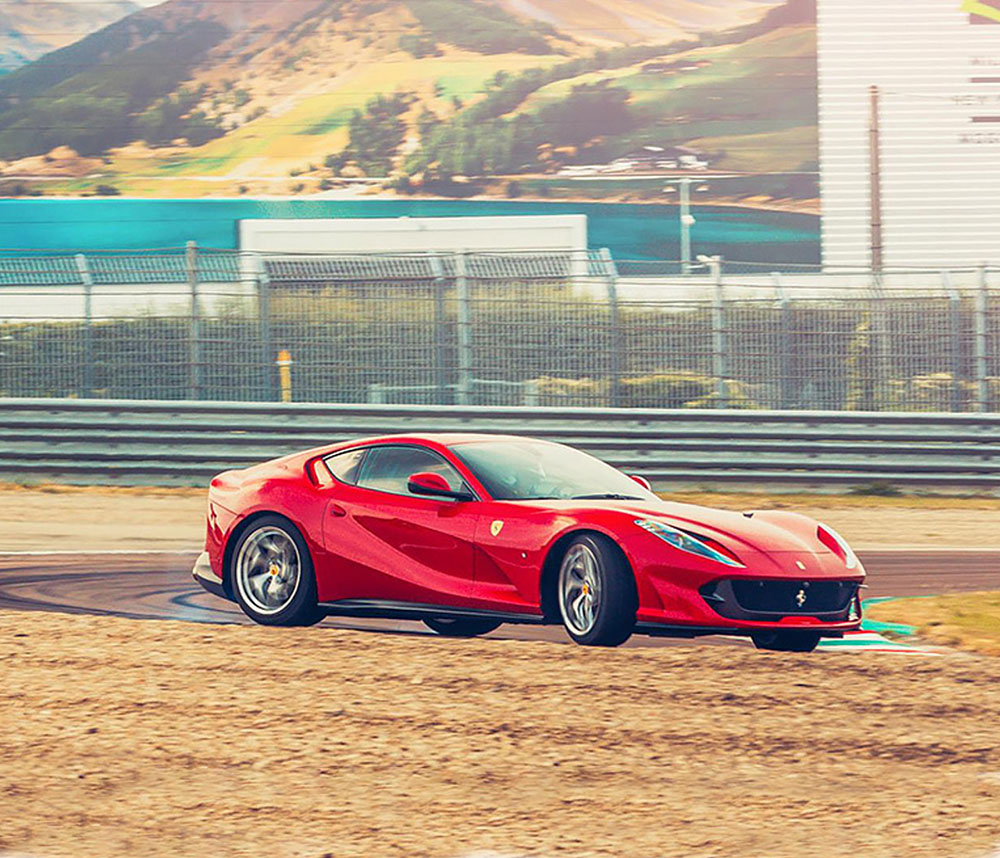
I didn’t have much time out on the road in the Superfast, but this is what I made of it. The crucial bumpy road damper button that softens the suspension still works, but it appears to leave a firmer set up than on the F12. This might be sub-optimal in the UK. The car is firmer than before, which again I’m not sure is quite what is needed of a big sports GT. Equally, the 4WS does make it feel much more agile and the gearbox is now more responsive, if still a way behind the PDK Porsche serves in the GT3. The motor is simply immense and the noise from inside the cabin is just what you’d expect: expensive, angry, mechanical - my only criticism being that from the outside the shriek from the exhausts is almost too intense.
The revised cabin is architecturally complicated and, in a first for Ferrari, actually demonstrates some acknowledgement of the word ‘ergonomics’. The revised screens either side of central rev counter are much sharper and the new rotary dial for the wipers is an improvement. But trying to get comfortable with the way everything works in a brief test drive is largely fruitless. It takes much longer for an addled brain like mine to assimilate itself to so many functions - but there are certainly no hidden horrors in there. The boot is a decent size, the optional bucket seats give an excellent pinch to the rib cage and the steering wheel still doesn’t extend telescopically as far as I’d like. Then again, I’m a very short person. At a cruise the tyre noise is quite extreme and Ferrari certainly hasn’t reduced the NVH levels on this new car the way it did on the FF’s replacement, the GTC4 Lusso.
Some people don’t like those nostril apertures and the spinning star wheel centres on the test car appeared to anger Twitter and Instagram - weirdly I disliked them on the stand at the Geneva show, but after a day looking at them have become a fan. You have to decide on the looks. All I can tell you is that no-one else makes a car like this. A super GT in the great tradition of the genre - front engined, normally aspirated, inter-galactically fast and yet somehow so much more dignified than its mid-engined so-called rivals.
The 812 isn’t perfect, but it drips with personality and seduces with vast performance. It might well be the last of its type; if so it is a fitting celebration for the end of an era.
